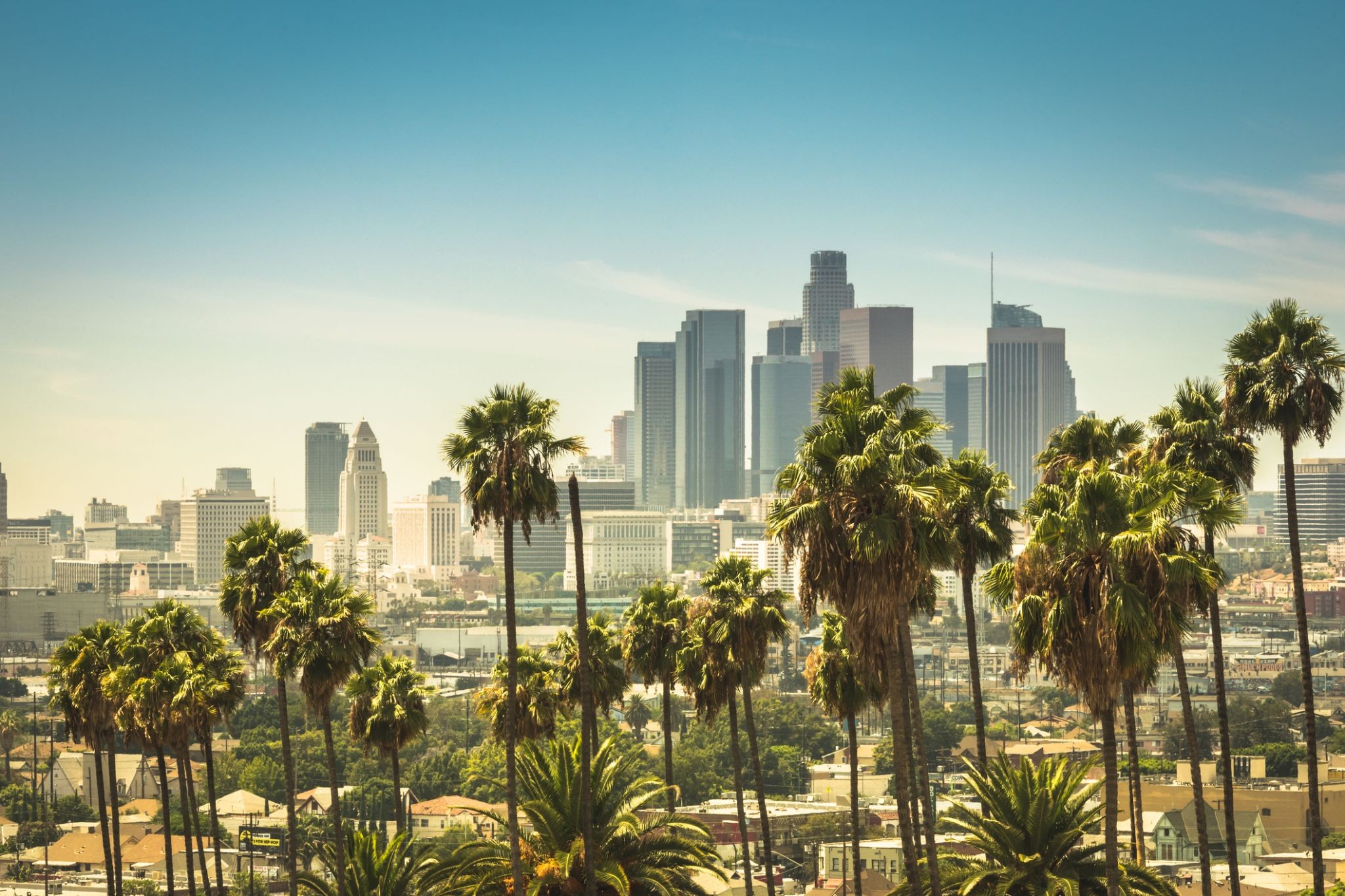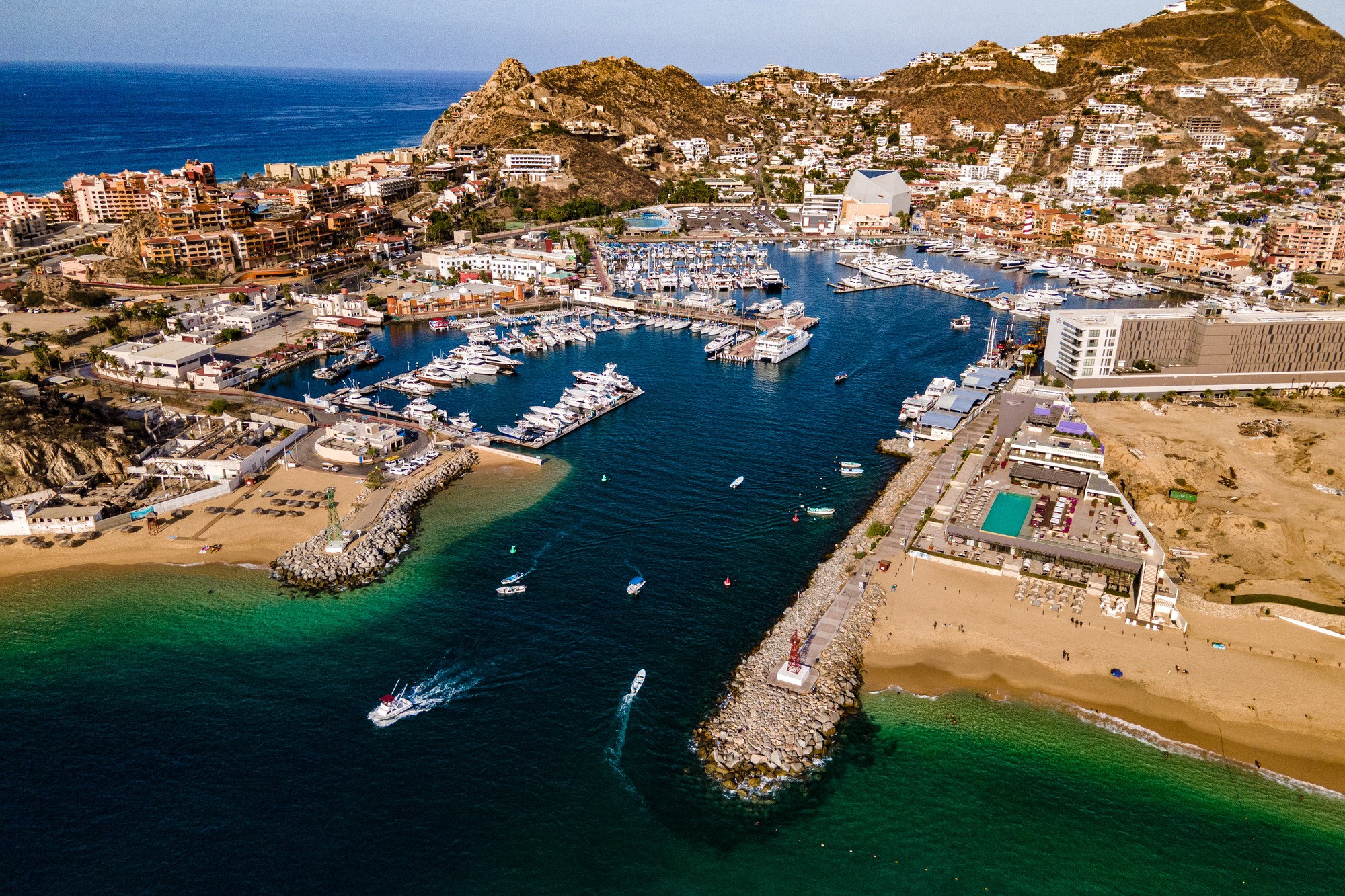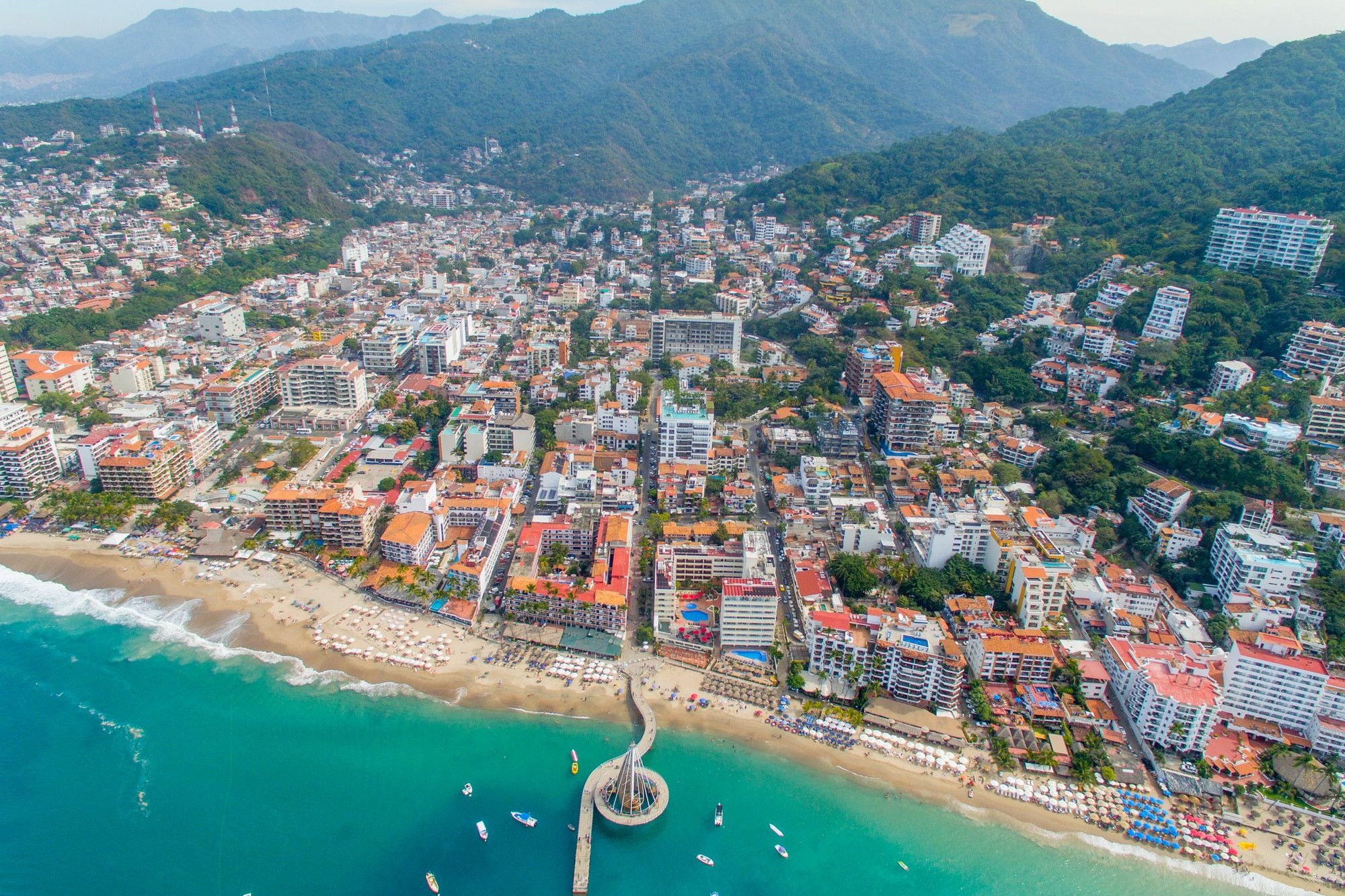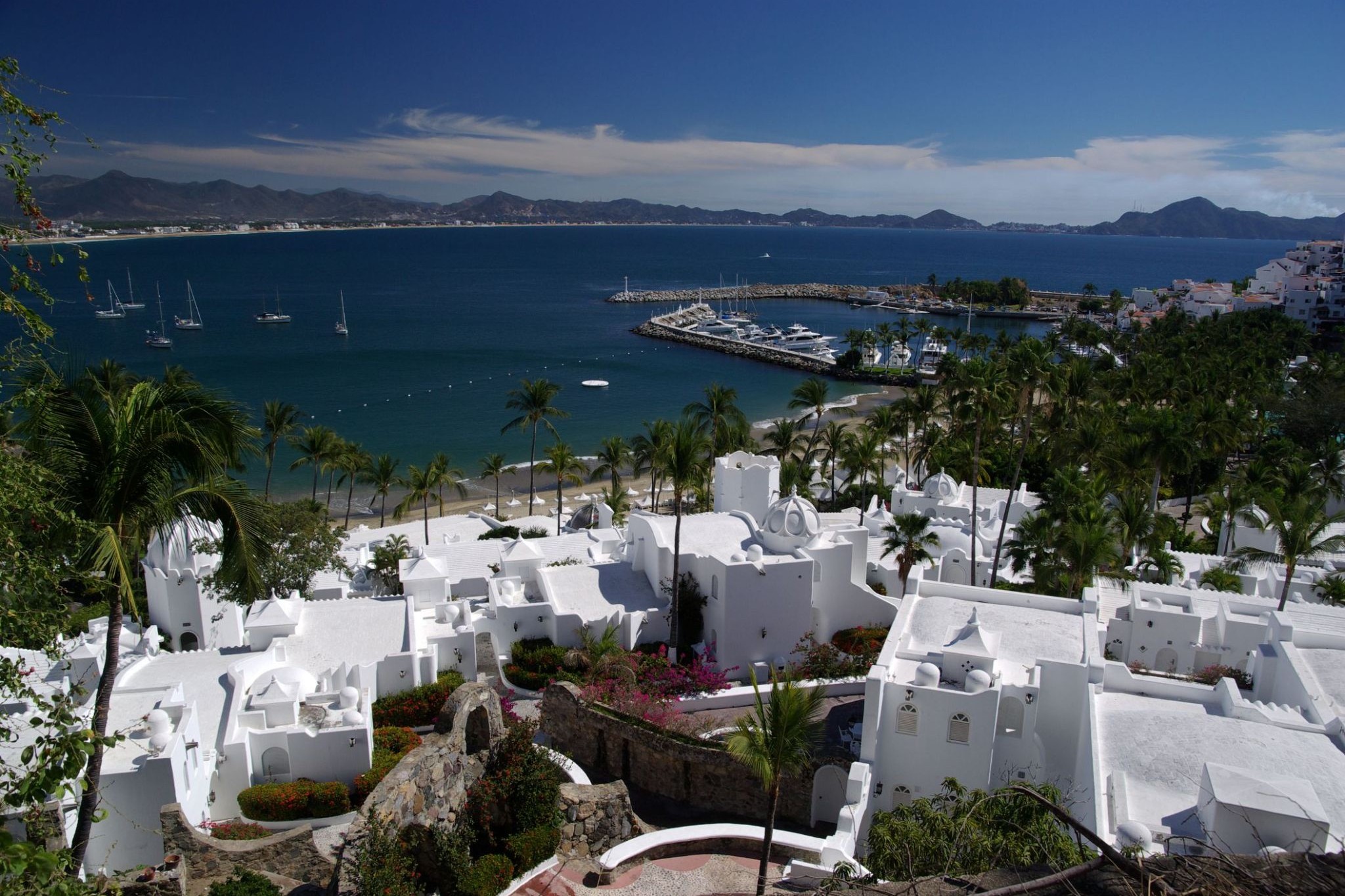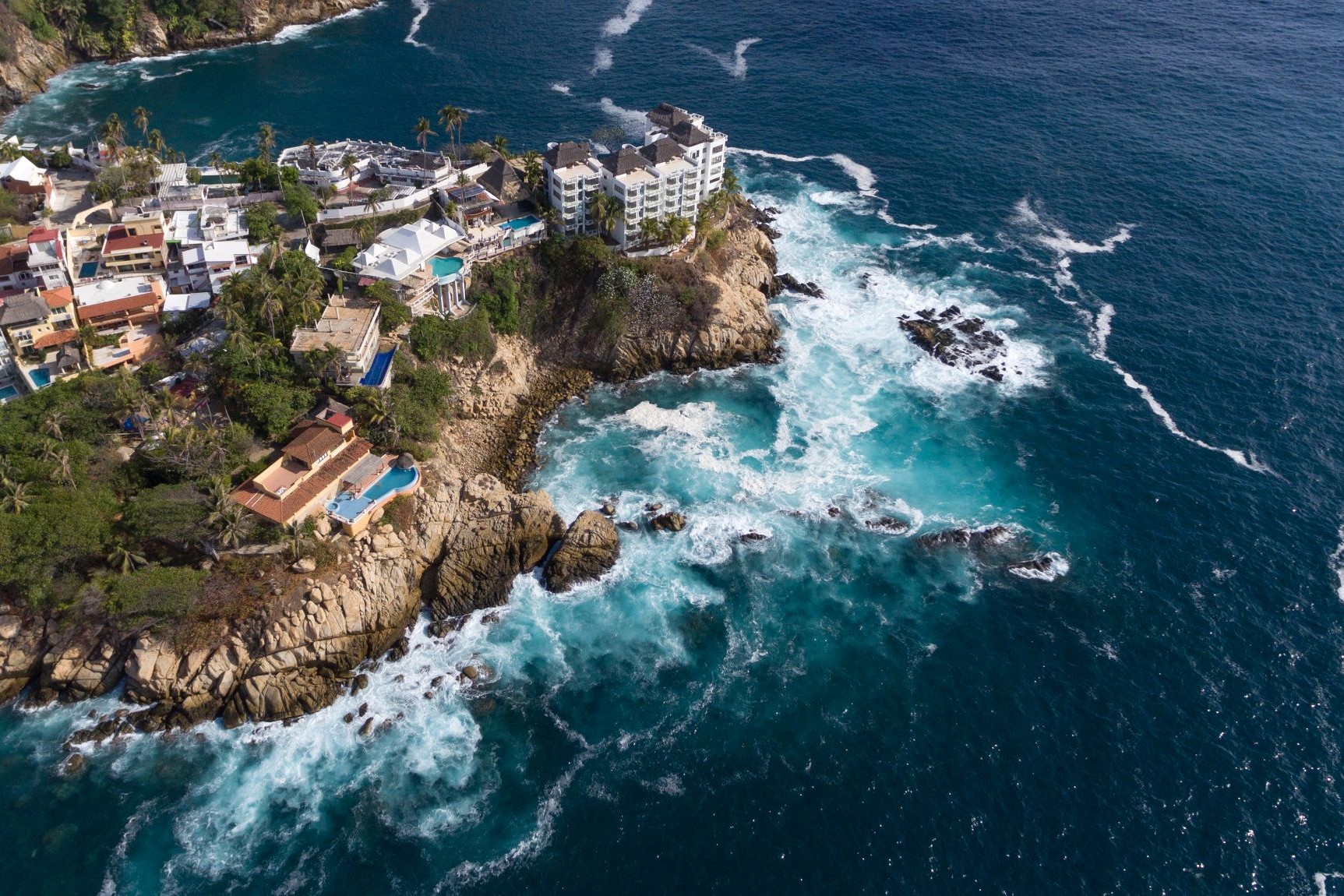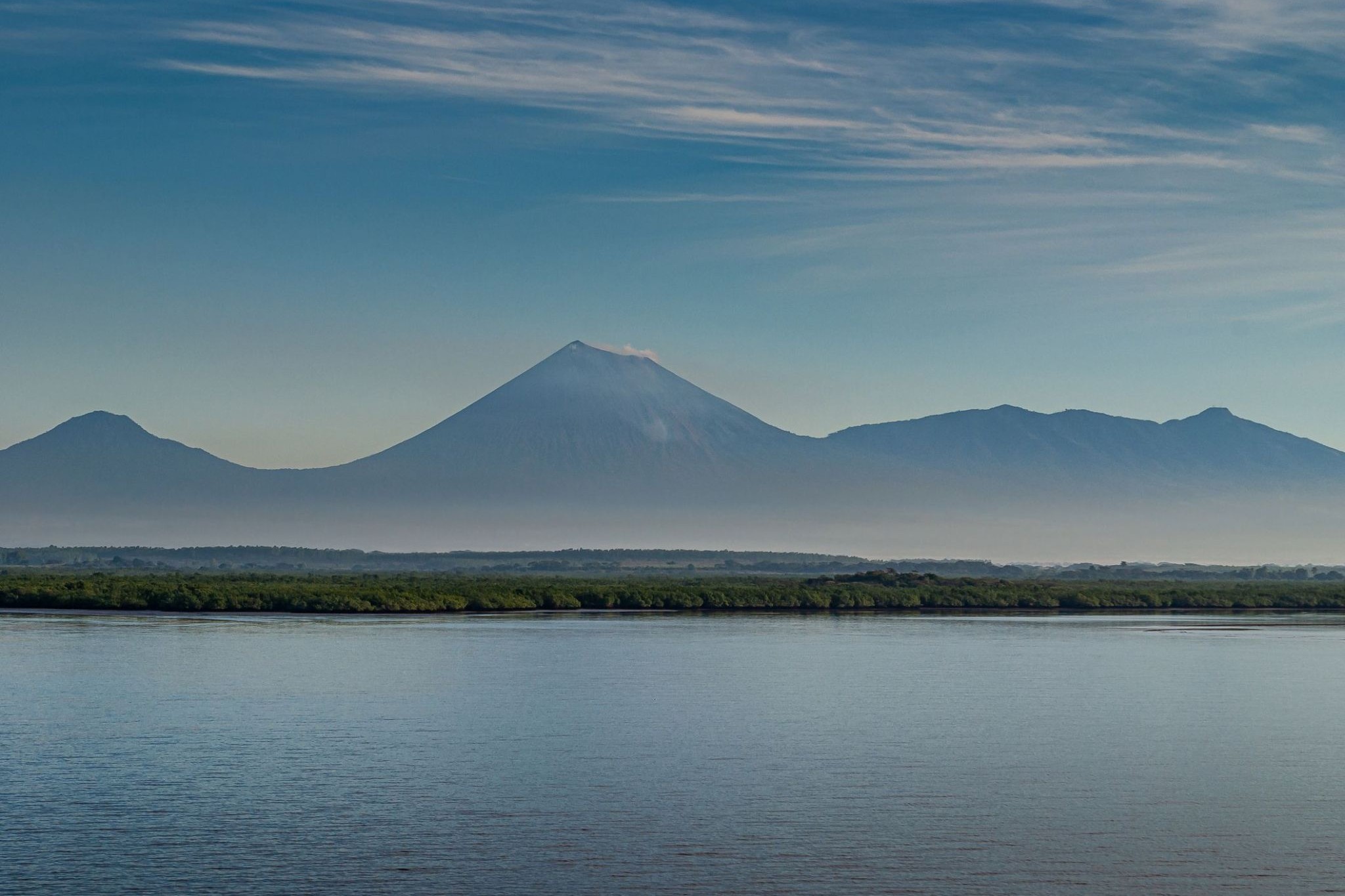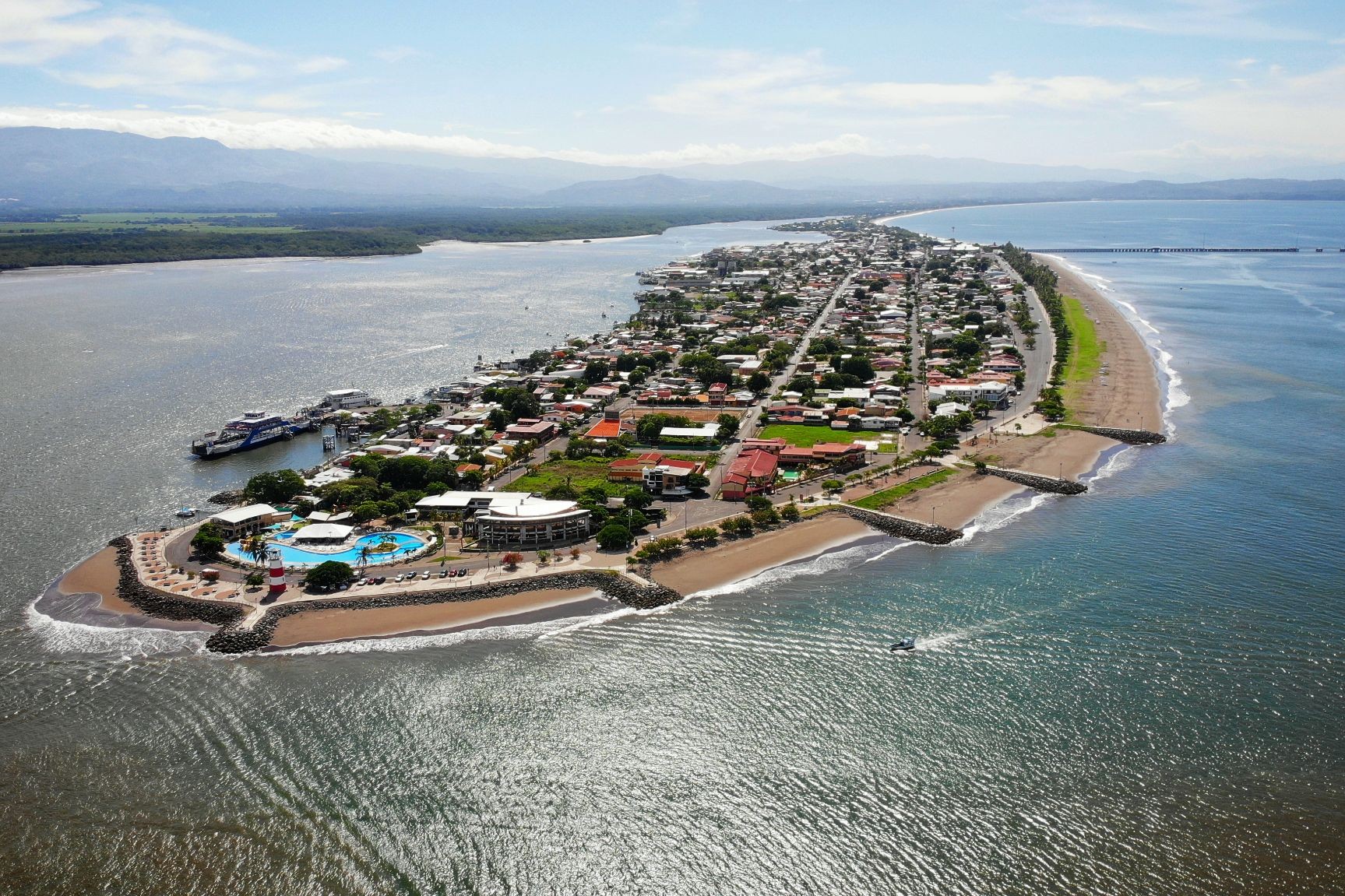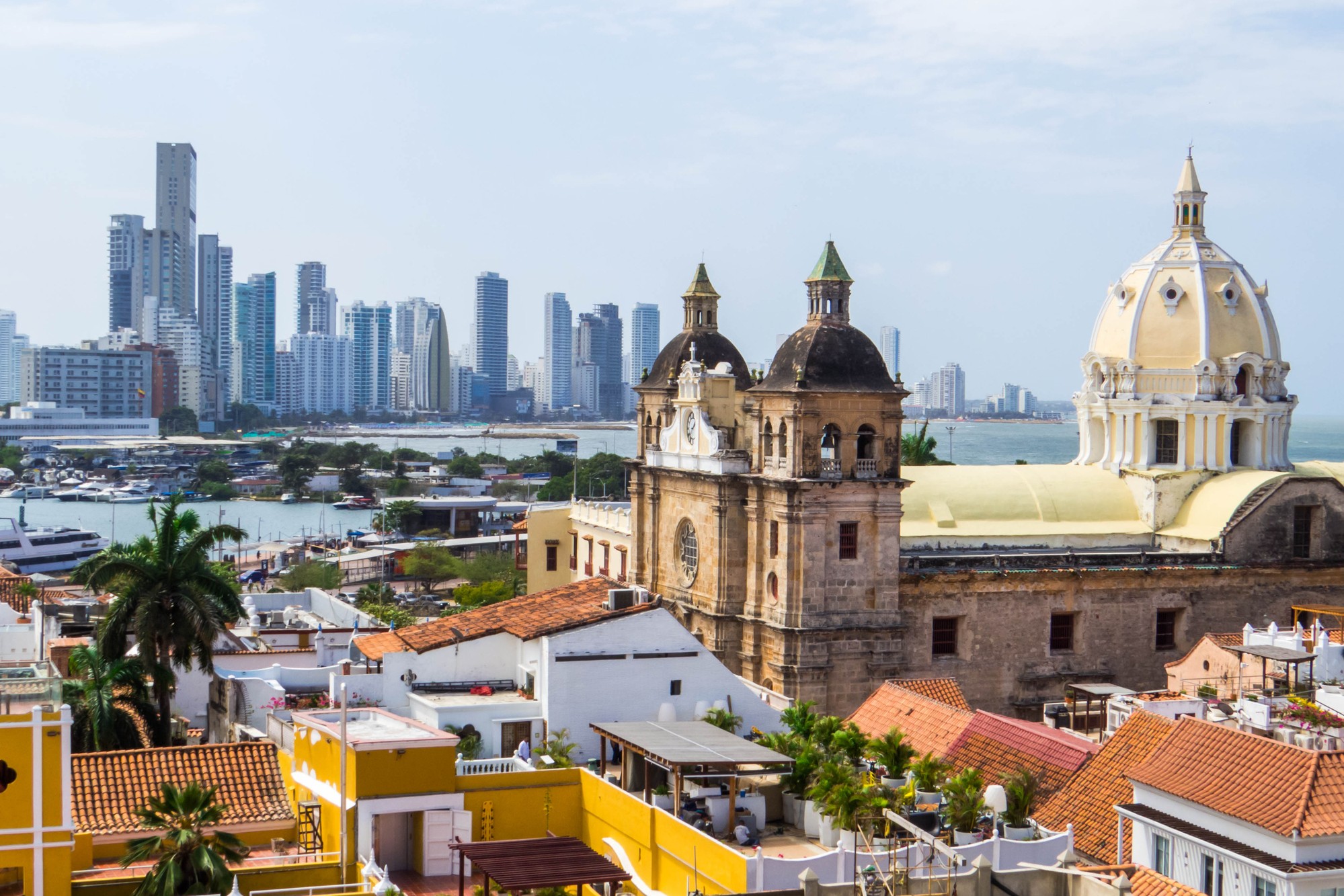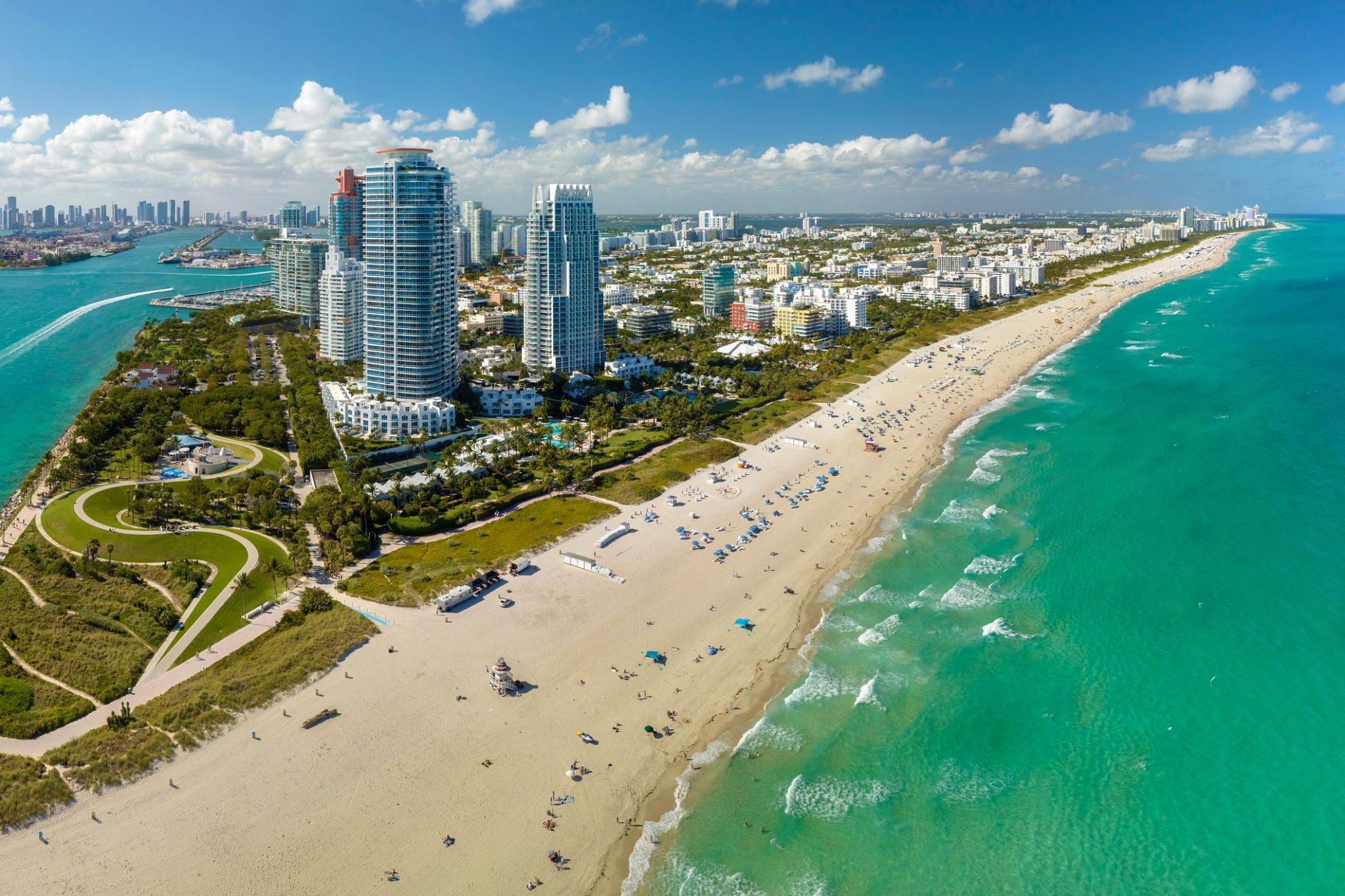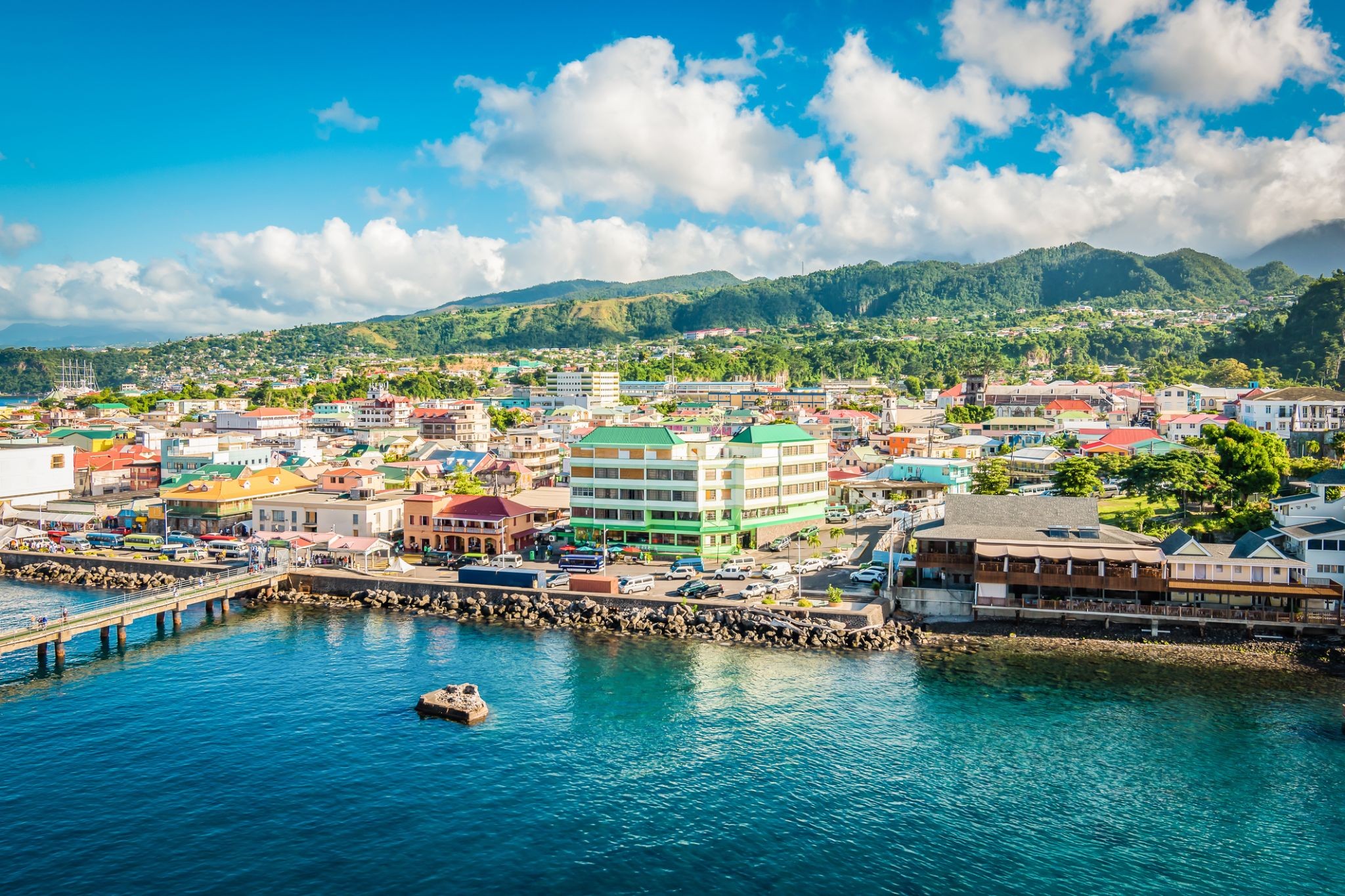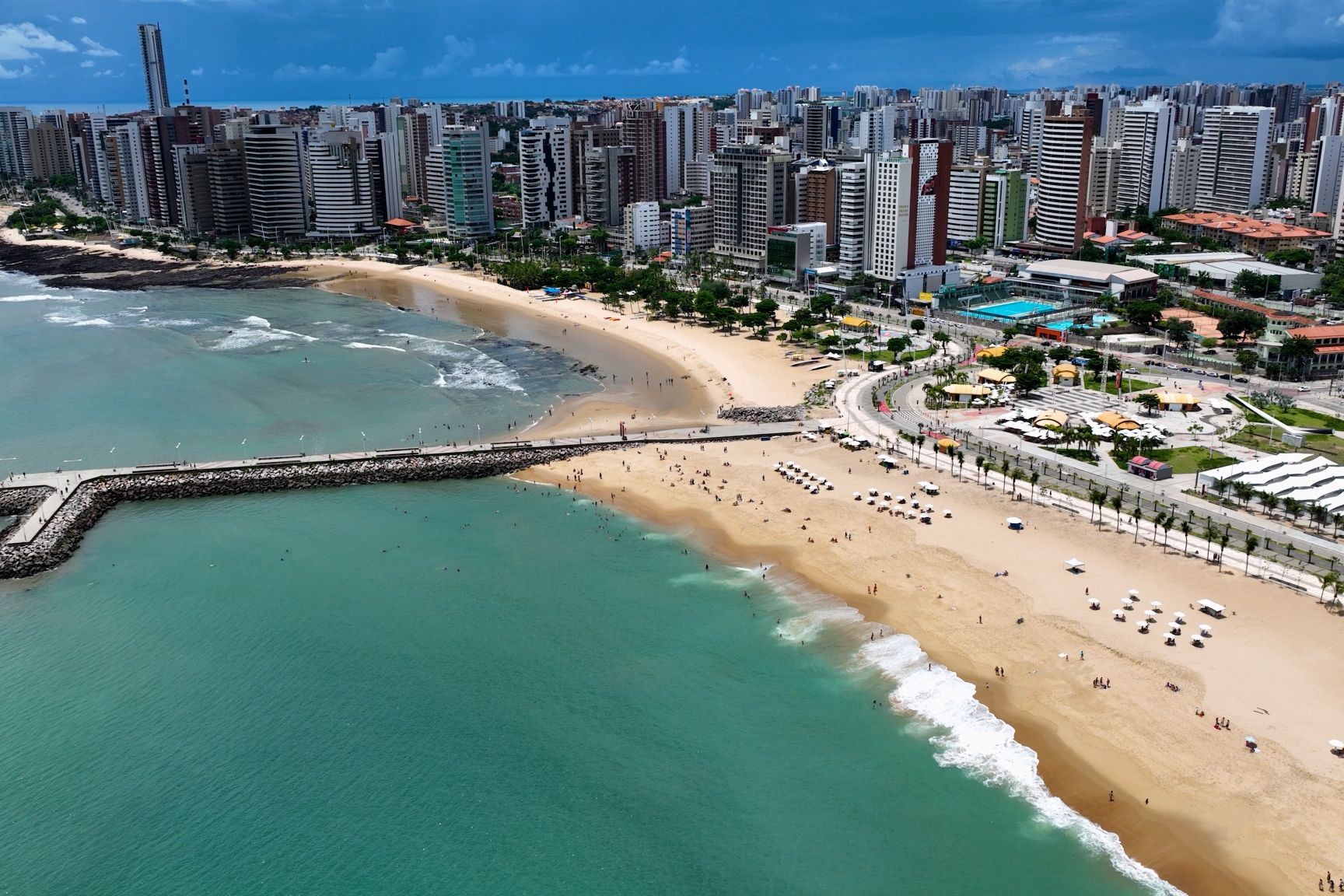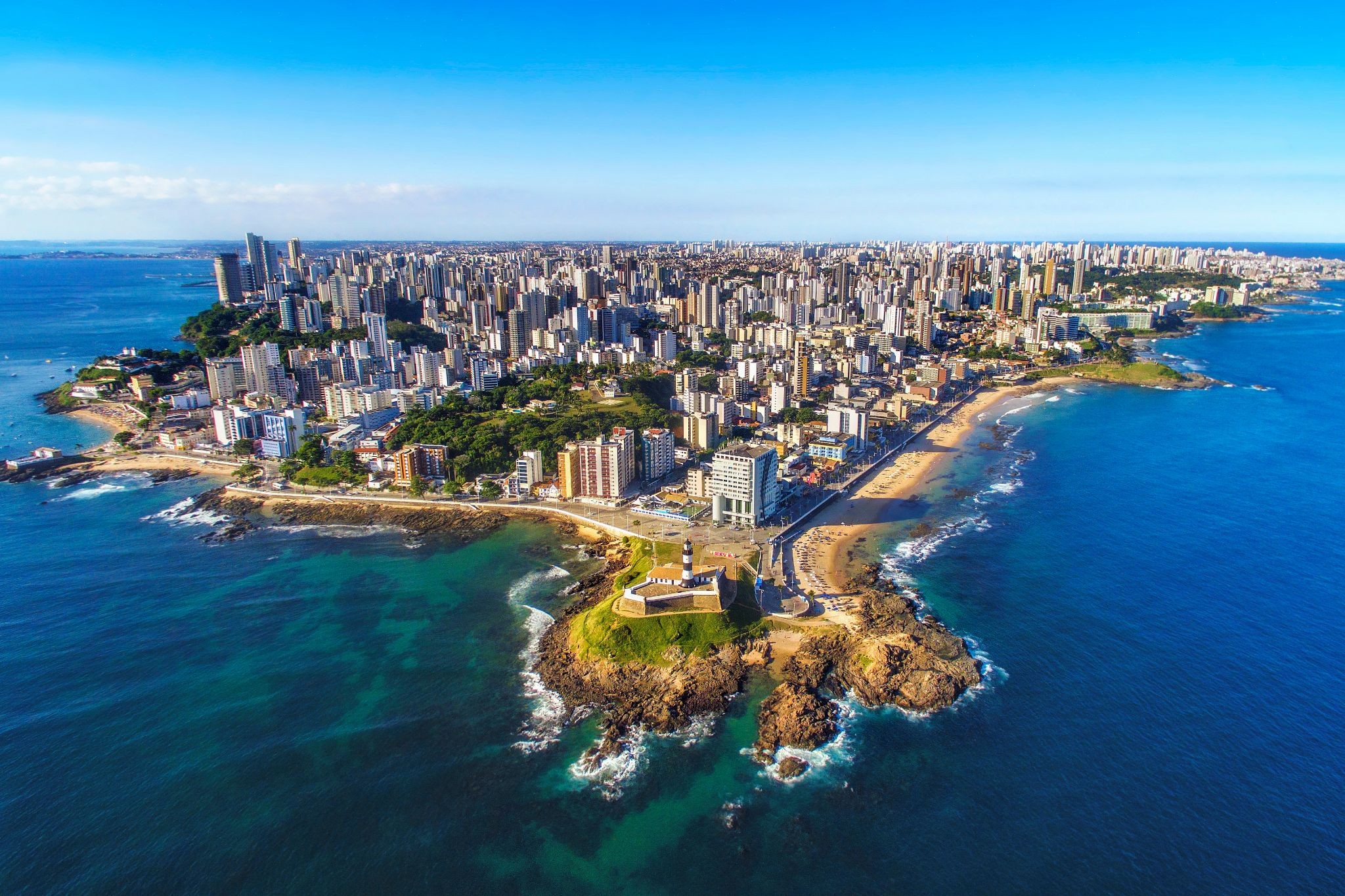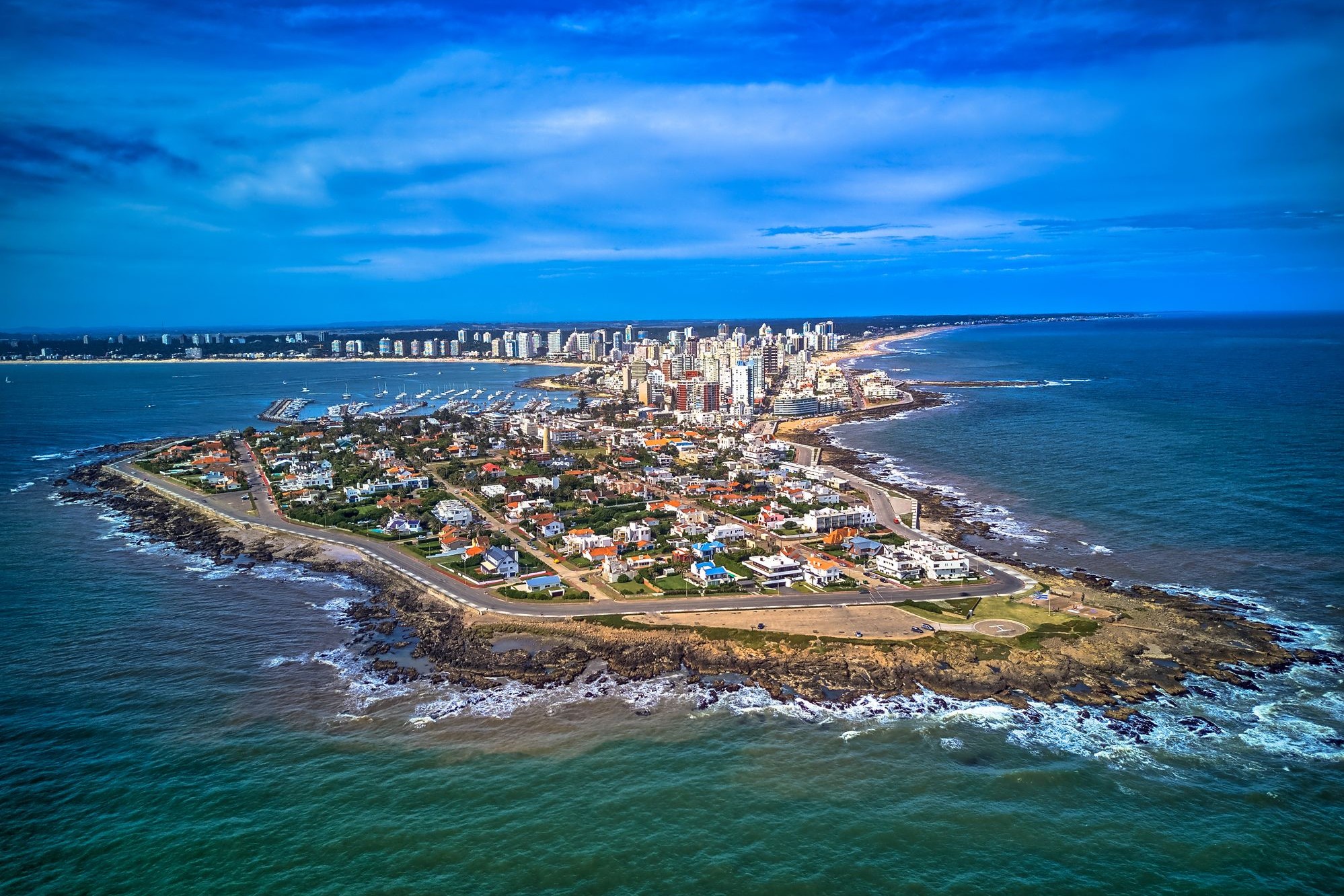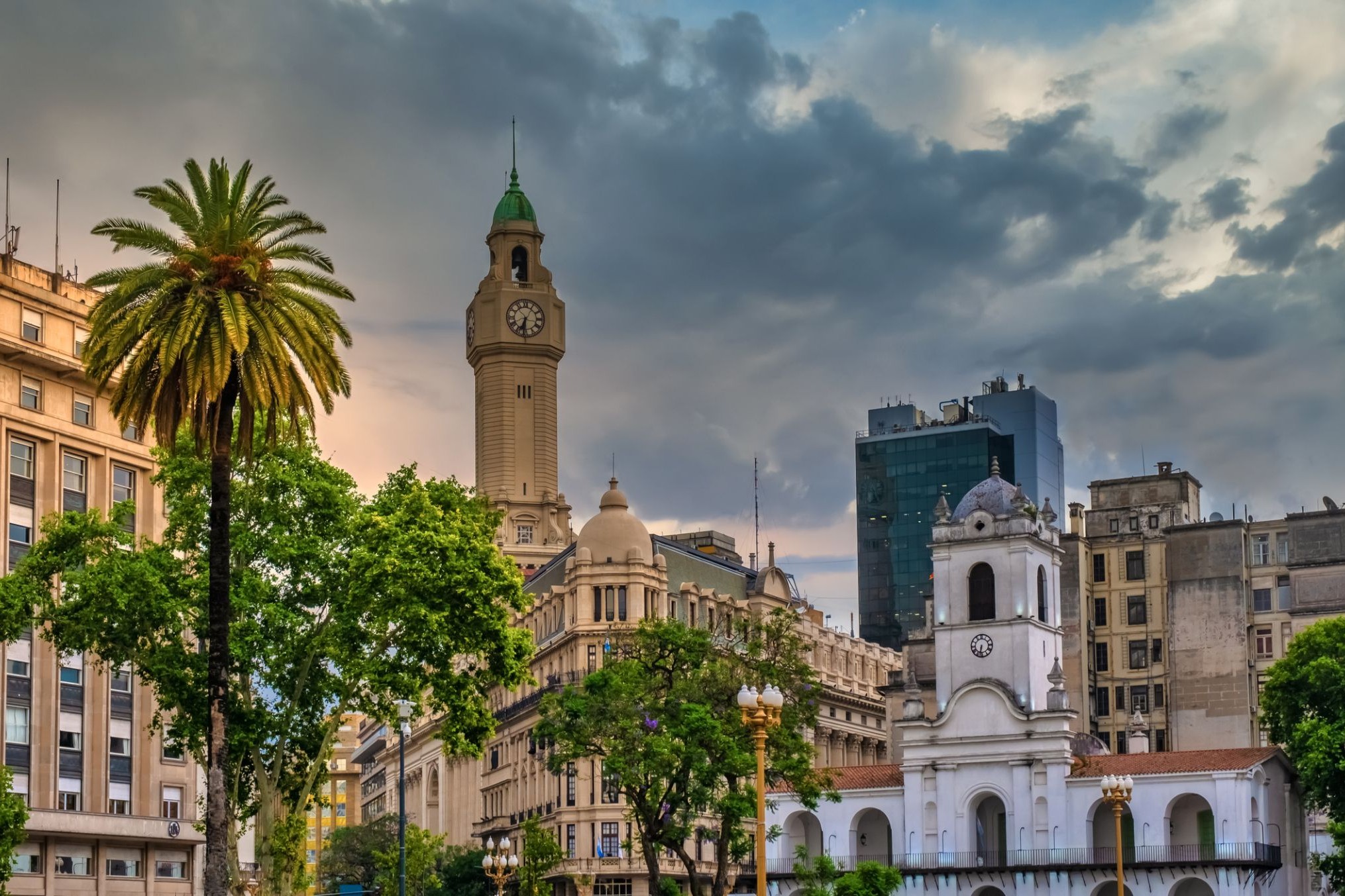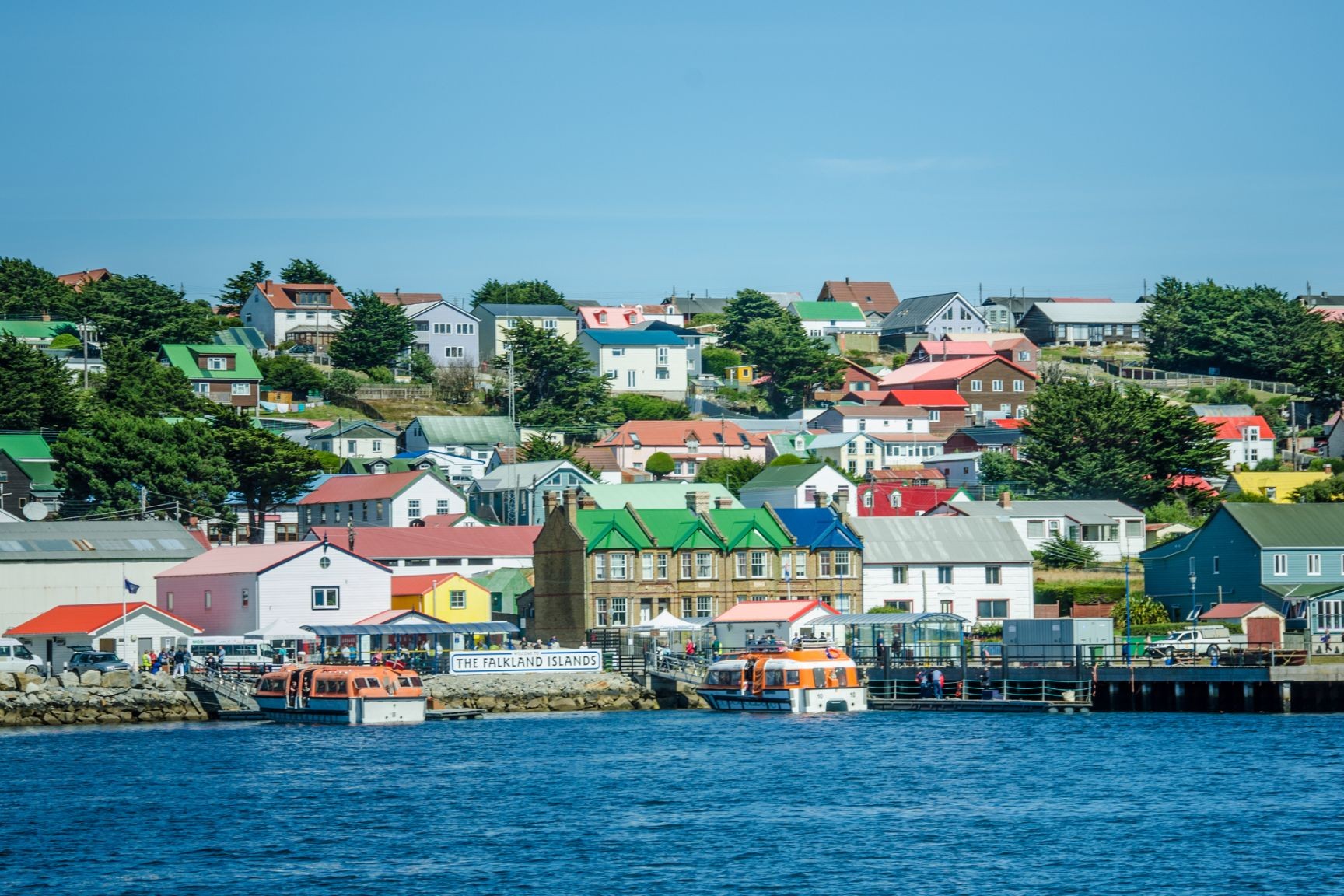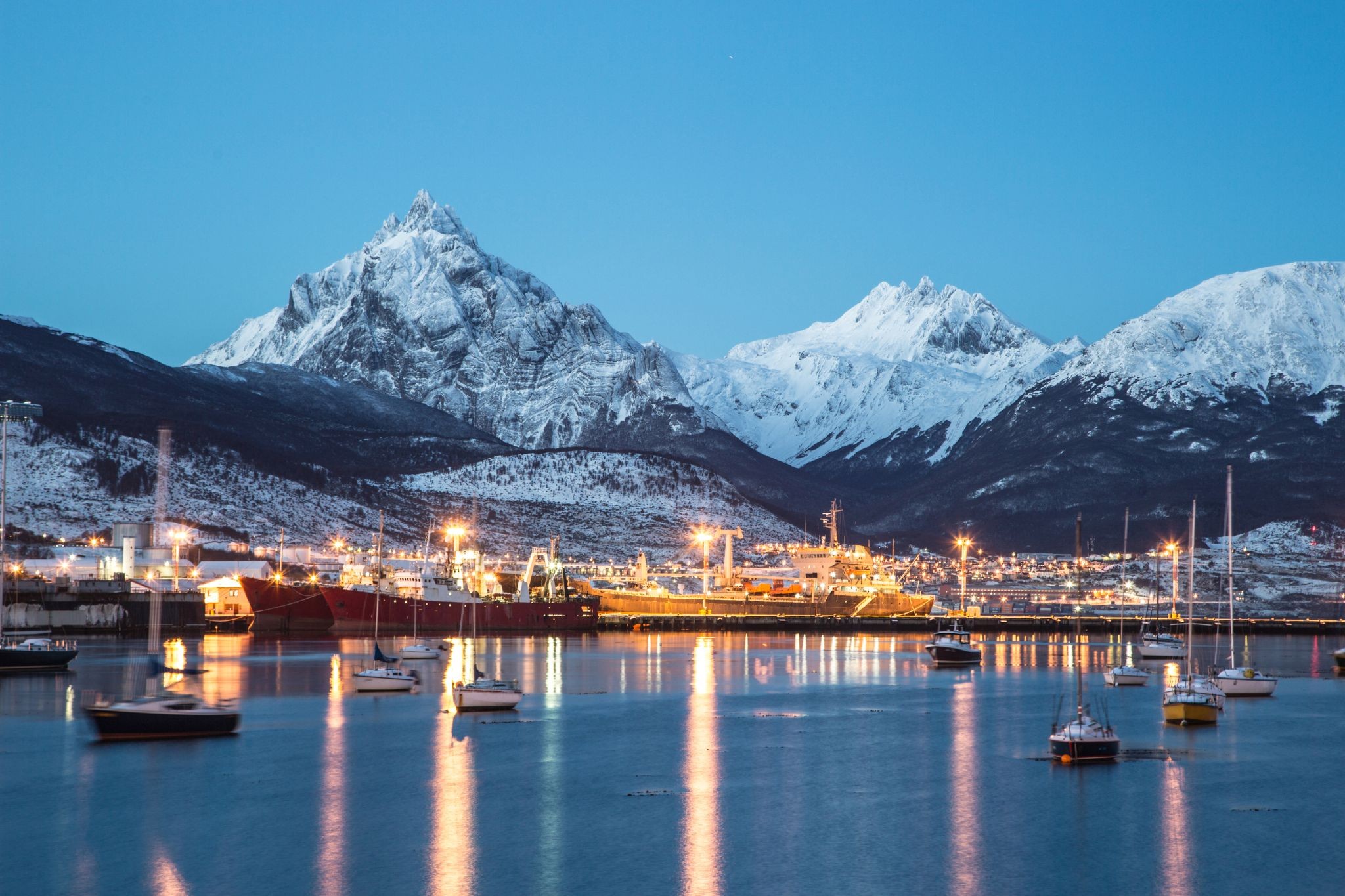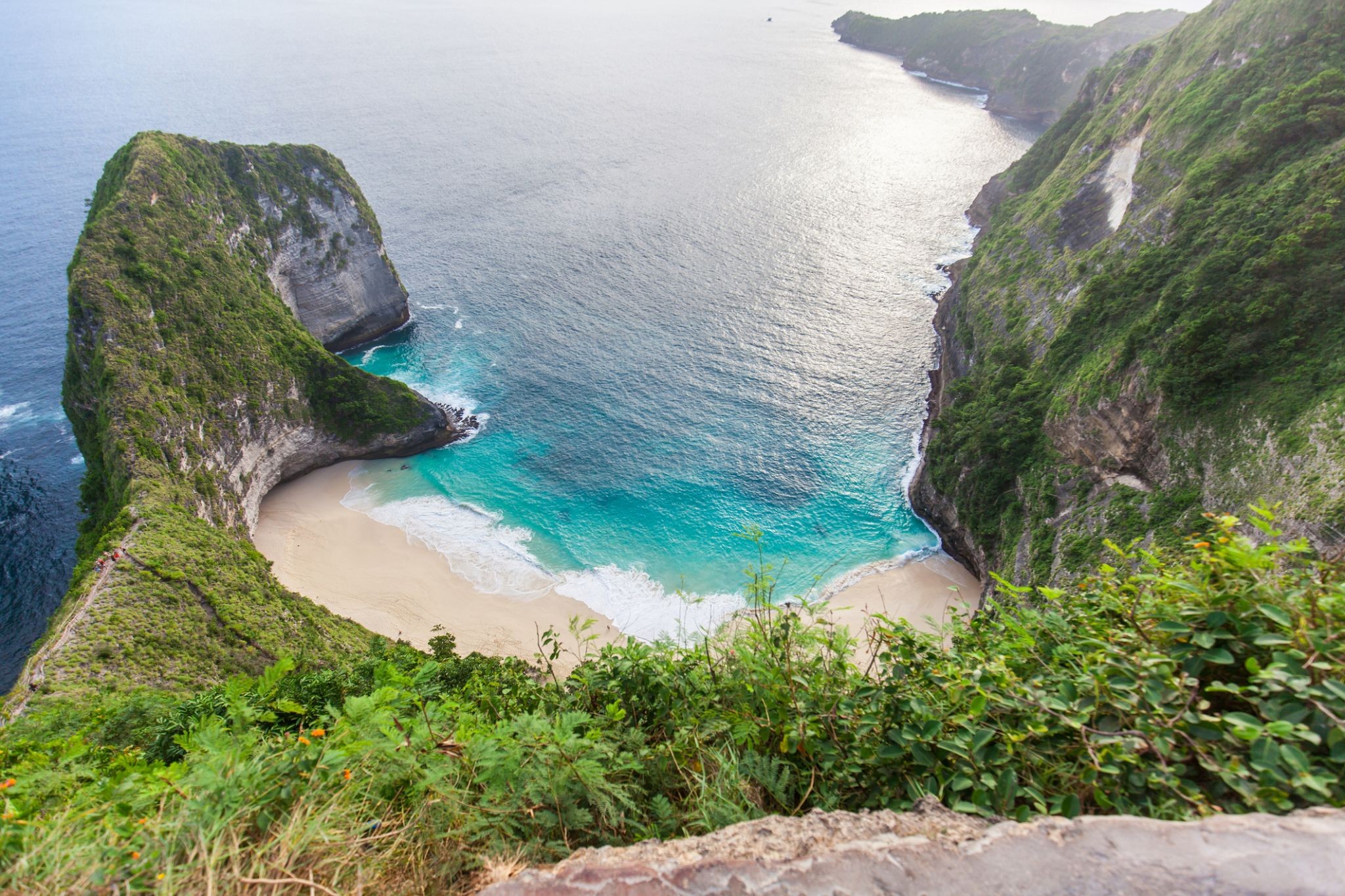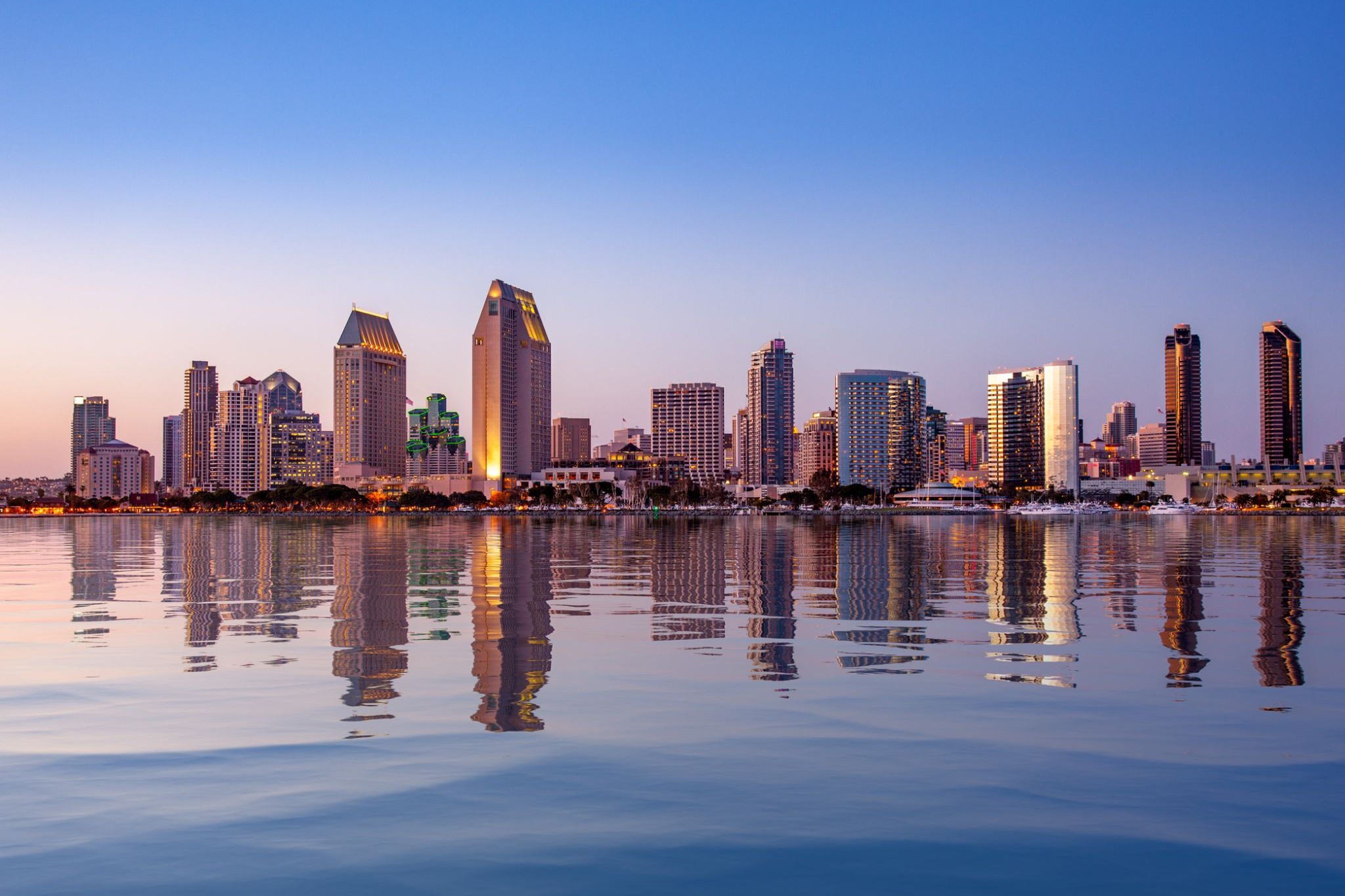Cruise: 30,941,600
Spanning the americas
| Cruise Region : USA / Canada / Mexico |
| Company : Oceania Cruises |
| Ship : VISTA |
| Journey Start : Sat 20 Dec 2025 |
| Journey End : Sat 07 Mar 2026 |
| Count Nights : 77 nights |
Schedule
| Day | Date | Port | Arrival | Departure |
|---|---|---|---|---|
| 1 | 20.12 Sat | Los Angeles / USA | 07:00 | 18:00 |
| 2 | 21.12 Sun | Day at sea / Sea | ||
| 3 | 22.12 Mon | Day at sea / Sea | ||
| 4 | 23.12 Tue | Cabo San Lucas / Mexico | 07:00 | 16:00 |
| 5 | 24.12 Wed | Puerto Vallarta / Mexico | 10:00 | 19:00 |
| 6 | 25.12 Thu | Manzanillo / Mexico | 07:00 | 15:00 |
| 7 | 26.12 Fri | Acapulco / Mexico | 09:00 | 18:00 |
| 8 | 27.12 Sat | Day at sea / Sea | ||
| 9 | 28.12 Sun | Puerto Quetzal / Guatemala | 08:00 | 17:00 |
| 10 | 29.12 Mon | Corinto / Nicaragua | 08:00 | 16:00 |
| 11 | 30.12 Tue | Puntarenas / Costa Rica | 09:00 | 18:00 |
| 12 | 31.12 Wed | Day at sea / Sea | ||
| 13 | 1.01 Thu | Day at sea / Sea | ||
| 14 | 2.01 Fri | Cartagena Bolivar / Colombia | 10:00 | 17:00 |
| 15 | 3.01 Sat | Day at sea / Sea | ||
| 16 | 4.01 Sun | Leesburg / USA | 09:00 | 18:00 |
| 17 | 5.01 Mon | Day at sea / Sea | ||
| 18 | 6.01 Tue | Miami / USA | 07:00 | 18:00 |
| 19 | 7.01 Wed | Day at sea / Sea | ||
| 20 | 8.01 Thu | Day at sea / Sea | ||
| 21 | 9.01 Fri | Gustavia / Saint Bartholomew Island | 09:00 | 17:00 |
| 22 | 10.01 Sat | Roseau / Dominica | 07:00 | 17:00 |
| 23 | 11.01 Sun | Bridgetown Barbados / Barbados | 07:00 | 17:00 |
| 24 | 12.01 Mon | Day at sea / Sea | ||
| 25 | 13.01 Tue | Devil’s Point / Bahamas | 10:00 | 17:00 |
| 26 | 14.01 Wed | Day at sea / Sea | ||
| 27 | 15.01 Thu | Belen / Brazil | 08:00 | 16:00 |
| 28 | 16.01 Fri | Day at sea / Sea | ||
| 29 | 17.01 Sat | Fortaleza / Brazil | 11:00 | 20:00 |
| 30 | 18.01 Sun | Day at sea / Sea | ||
| 31 | 19.01 Mon | Day at sea / Sea | ||
| 32 | 20.01 Tue | Salvador / Brazil | 07:00 | 18:00 |
| 33 | 21.01 Wed | Day at sea / Sea | ||
| 34 | 22.01 Thu | Armacao dos Buzios / Brazil | 10:00 | 19:00 |
| 35 | 23.01 Fri | Rio de Janeiro / Brazil | 08:00 | |
| 36 | 24.01 Sat | Rio de Janeiro / Brazil | ||
| 37 | 25.01 Sun | Rio de Janeiro / Brazil | 18:00 | |
| 38 | 26.01 Mon | Big Island, Big Island / Brazil | 07:00 | 18:00 |
| 39 | 27.01 Tue | Santos / Brazil | 07:00 | 18:00 |
| 40 | 28.01 Wed | Porto Belo / Brazil | 09:00 | 18:00 |
| 41 | 29.01 Thu | Day at sea / Sea | ||
| 42 | 30.01 Fri | Rio Grande - Rio Grande do Sul / Brazil | 07:00 | 16:00 |
| 43 | 31.01 Sat | Punta del Este / Uruguay | 08:00 | 18:00 |
| 44 | 1.02 Sun | Montevideo / Uruguay | 07:00 | 20:00 |
| 45 | 2.02 Mon | Buenos Aires / Argentina | 08:00 | |
| 46 | 3.02 Tue | Buenos Aires / Argentina | 18:00 | |
| 47 | 4.02 Wed | Montevideo / Uruguay | 07:00 | 18:00 |
| 48 | 5.02 Thu | Day at sea / Sea | ||
| 49 | 6.02 Fri | Day at sea / Sea | ||
| 50 | 7.02 Sat | Port Stanley, Falkland Islands / Falkland islands | 07:00 | 18:00 |
| 51 | 8.02 Sun | Day at sea / Sea | ||
| 52 | 9.02 Mon | Ushuaia / Argentina | 07:00 | 16:00 |
| 53 | 10.02 Tue | Punta Arenas / Chile | 09:00 | 18:00 |
| 54 | 11.02 Wed | Day at sea / Sea | ||
| 55 | 12.02 Thu | Day at sea / Sea | ||
| 56 | 13.02 Fri | Puerto Montt / Chile | 08:00 | 16:00 |
| 57 | 14.02 Sat | Day at sea / Sea | ||
| 58 | 15.02 Sun | SANTIAGO DE CHILE | 08:00 | 17:00 |
| 59 | 16.02 Mon | Coquimbo / Chile | 08:00 | 17:00 |
| 60 | 17.02 Tue | Day at sea / Sea | ||
| 61 | 18.02 Wed | Iquique | 08:00 | 18:00 |
| 62 | 19.02 Thu | Day at sea / Sea | ||
| 63 | 20.02 Fri | PISCO NAZCA LINES | 07:00 | 19:00 |
| 64 | 21.02 Sat | FIVE DAYS PICTURES | 06:00 | 17:00 |
| 65 | 22.02 Sun | Salaverri / Peru | 10:00 | 19:00 |
| 66 | 23.02 Mon | Day at sea / Sea | ||
| 67 | 24.02 Tue | Manta rays / Ecuador | 07:00 | 17:00 |
| 68 | 25.02 Wed | Day at sea / Sea | ||
| 69 | 26.02 Thu | Puntarenas / Costa Rica | 09:00 | 18:00 |
| 70 | 27.02 Fri | South Cross / Peru | 07:00 | 16:00 |
| 71 | 28.02 Sat | Akahutla / Salvador | 08:00 | 16:00 |
| 72 | 1.03 Sun | Day at sea / Sea | ||
| 73 | 2.03 Mon | Acapulco / Mexico | 07:00 | 16:00 |
| 74 | 3.03 Tue | Day at sea / Sea | ||
| 75 | 4.03 Wed | Cabo San Lucas / Mexico | 07:00 | 18:00 |
| 76 | 5.03 Thu | Day at sea / Sea | ||
| 77 | 6.03 Fri | Ensenada | 10:00 | 18:00 |
| 78 | 7.03 Sat | San Diego California / USA | 06:00 | 18:00 |
-
 Day 1: 07:00-18:00
Day 1: 07:00-18:00Los Angeles / USA
Los Angeles officially the City of Los Angeles and often known colloquially by its initials L.A., is the most populous city in California and the second most populous city in the United States, after New York. With an estimated population of four million, Los Angeles is the cultural, financial, and commercial center of Southern California. Nicknamed the "City of Angels" partly because of its name's Spanish meaning, Los Angeles is known for its Mediterranean climate, ethnic diversity, Hollywood, and the entertainment industry, and sprawling metropolis.
Los Angeles is in a large basin bounded by the Pacific Ocean on one side and by mountains as high as 10,000 feet (3,000 m) on the others. The city proper, which covers about 469 square miles (1,210 km2), is the seat of Los Angeles County, the most populated county in the country. Los Angeles is also the principal city of the Los Angeles metropolitan area, the second largest in the United States after that of New York City, with a population of 13.1 million. It is part of the Los Angeles-Long Beach combined statistical area, also the nation's second most populous area with a 2015 estimated population of 18.7 million.
Los Angeles is one of the most substantial economic engines within the United States, with a diverse economy in a broad range of professional and cultural fields. Los Angeles is also famous as the home of Hollywood, a major center of the world entertainment industry. A global city, it has been ranked 6th in the Global Cities Index and 9th in the Global Economic Power Index. The Los Angeles combined statistical area also has a gross metropolitan productof $831 billion (as of 2008), making it the third-largest in the world, after the Tokyo and New York metropolitan areas. Los Angeles hosted the 1932 and 1984 Summer Olympics and will host the event for a third time in 2028. The city also hosted the Miss Universe pageant twice, in 1990 and 2006, and was one of 9 American cities to host the 1994 FIFA men's soccer World Cup and one of 8 to host the 1999 FIFA women's soccer World Cup, hosting the finalmatch for both tournaments.
Historically home to the Chumash and Tongva, Los Angeles was claimed by Juan Rodríguez Cabrillo for Spain in 1542 along with the rest of what would become Alta California. The city was officially founded on September 4, 1781, by Spanish governor Felipe de Neve. It became a part of Mexico in 1821 following the Mexican War of Independence. In 1848, at the end of the Mexican–American War, Los Angeles and the rest of California were purchased as part of the Treaty of Guadalupe Hidalgo, becoming part of the United States. Los Angeles was incorporated as a municipality on April 4, 1850, five months before California achieved statehood. The discovery of oil in the 1890s brought rapid growth to the city. The completion of the Los Angeles Aqueduct in 1913, delivering water from Eastern California, later assured the city's continued rapid growth.
-
 Day 2:
Day 2:Day at sea / Sea
-
 Day 3:
Day 3:Day at sea / Sea
-
 Day 4: 07:00-16:00
Day 4: 07:00-16:00Cabo San Lucas / Mexico
Cabo San Lucas or simply Cabo, is a resort city at the southern tip of the Baja California Peninsula, in the Mexican state of Baja California Sur. As of 2015, the population of the city was 81,111 inhabitants. Cabo San Lucas together with San José del Cabo is known as Los Cabos. Together they form a metropolitan area of 305,983 inhabitants.
Cabo has been rated as one of Mexico's top 5 tourist destinations; it is known for its beaches, scuba diving locations, balnearios, the sea arch El Arco de Cabo San Lucas, and marine life. The Los Cabos Corridor has become a heavily trafficked vacation destination for tourists, with numerous resorts and timeshares along the coast between Cabo San Lucas and San José del Cabo.
Cabo houses a range of wildlife, including rays, sharks, birds, and a range of fish, such as mahi-mahi (dorado), and striped marlin.
-
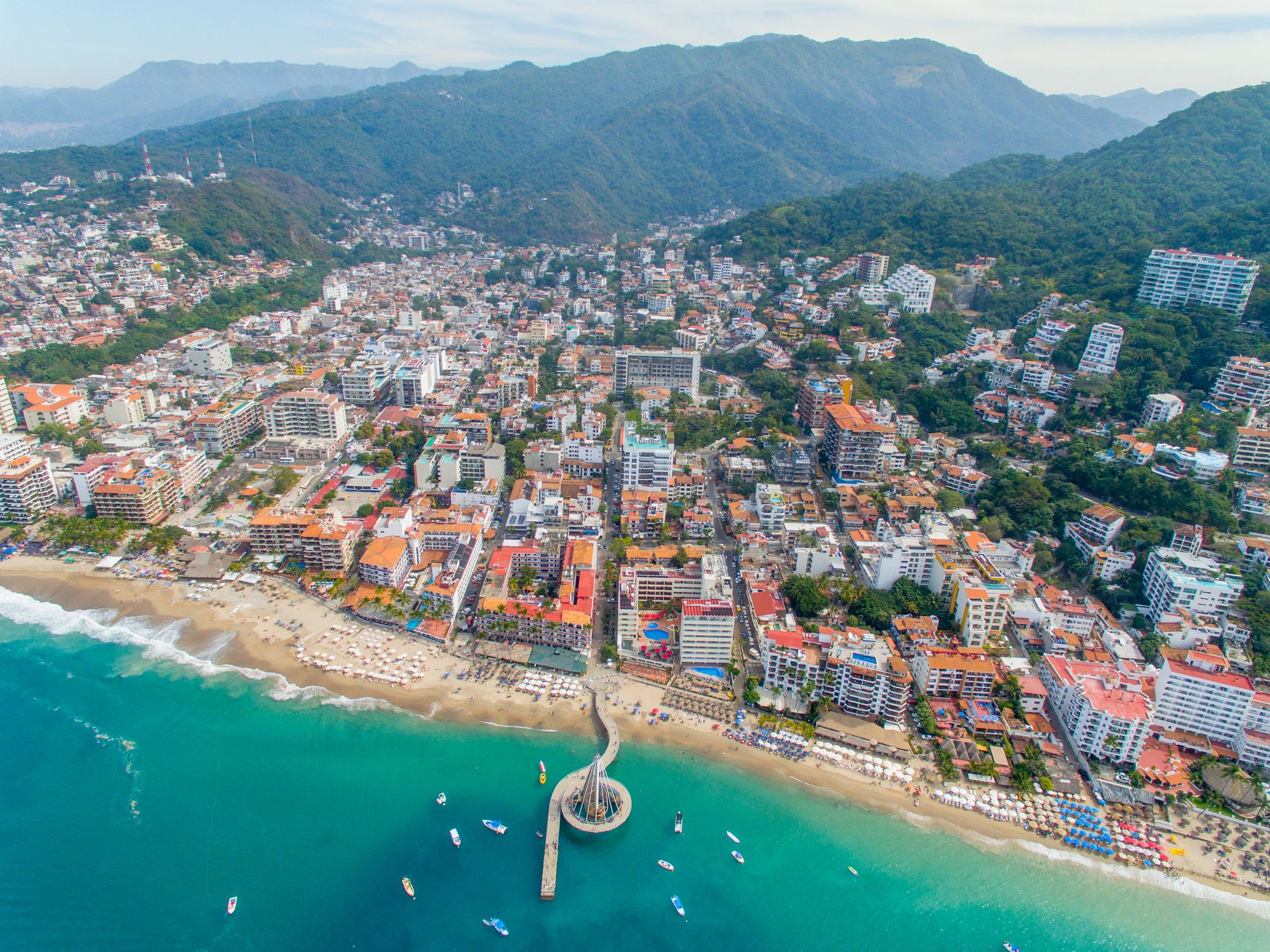 Day 5: 10:00-19:00
Day 5: 10:00-19:00Puerto Vallarta / Mexico
Puerto Vallarta is a Mexican beach resort city situated on the Pacific Ocean's Bahía de Banderas. PV or simply Vallarta is the second largest urban agglomeration in the state after the Guadalajara Metropolitan Area. The City of Puerto Vallarta is the government seat of the Municipality of Puerto Vallarta which comprises the city as well as population centers outside of the city extending from Boca de Tomatlán to the Nayarit border (the Ameca River). The city is located at 20°40′N 105°16′W. The municipality has an area of 1,300.7 square kilometres (502.19 sq mi). To the north it borders the southwest part of the state of Nayarit. To the east it borders the municipality of Mascota and San Sebastián del Oeste, and to the south it borders the municipalities of Talpa de Allende and Cabo Corrientes.
Puerto Vallarta is named after Ignacio Vallarta, a former governor of Jalisco. In Spanish, Puerto Vallarta is frequently shortened to "Vallarta", while English speakers call the city P.V. for short. In internet shorthand the city is often referred to as PVR, after the International Air Transport Association airport code for its Gustavo Diaz Ordaz International Airport.
-
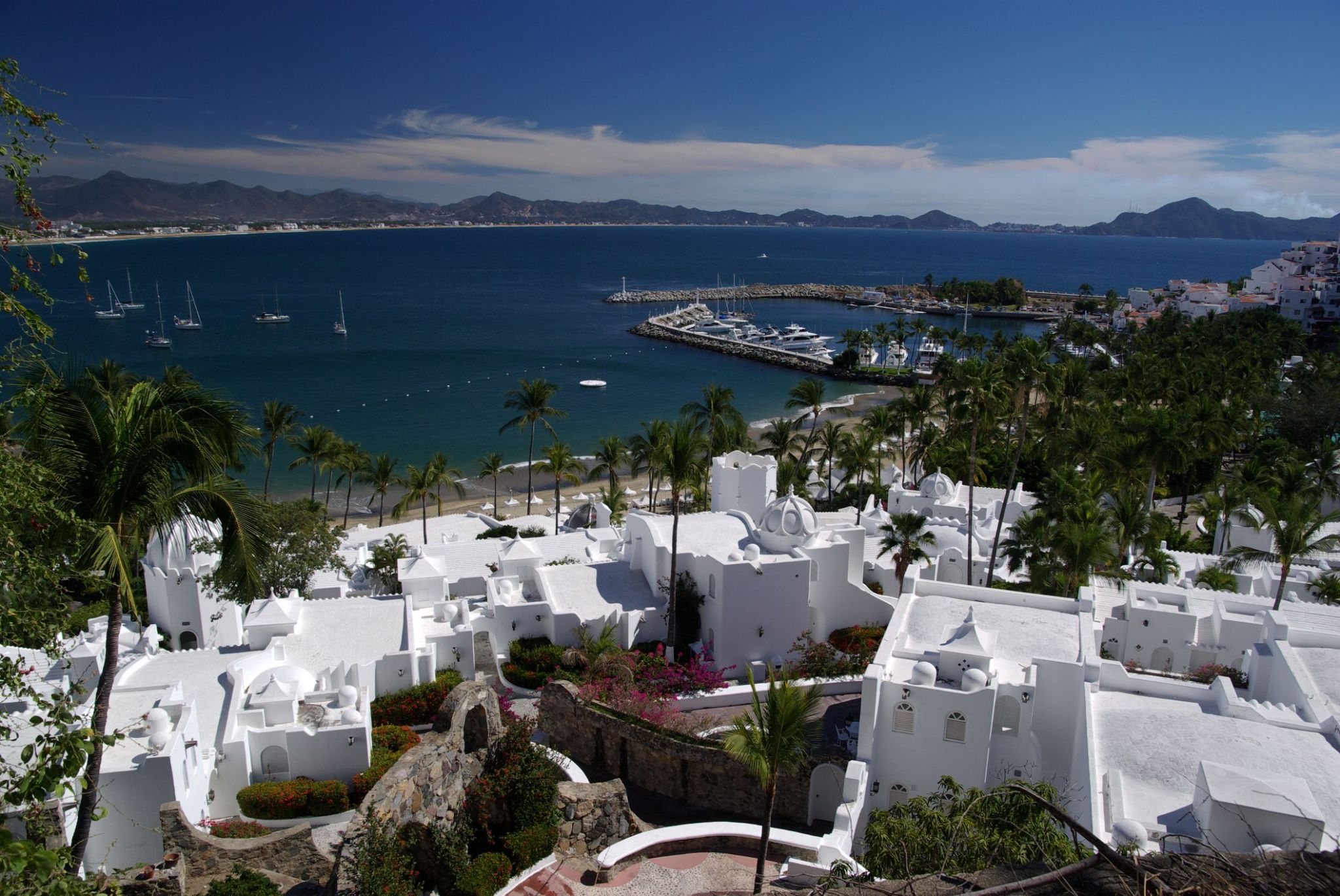 Day 6: 07:00-15:00
Day 6: 07:00-15:00Manzanillo / Mexico
Manzanillo is a picturesque port city on the Pacific coast in the Mexican state of Colima. It is known for its golden sand beaches and crystal-clear waters, making it an ideal destination for beach holidays, snorkeling, and surfing. The city also boasts a rich historical heritage, including an old seaport that plays a key role in the region's economy.
Manzanillo has a unique microclimate that allows for year-round enjoyment. In the city center, visitors can explore vibrant markets and sample local cuisine based on fresh seafood. Nearby nature reserves offer great opportunities for ecotourism. With each passing year, Manzanillo becomes increasingly popular among travelers, offering the perfect blend of beach relaxation and cultural discovery.
-
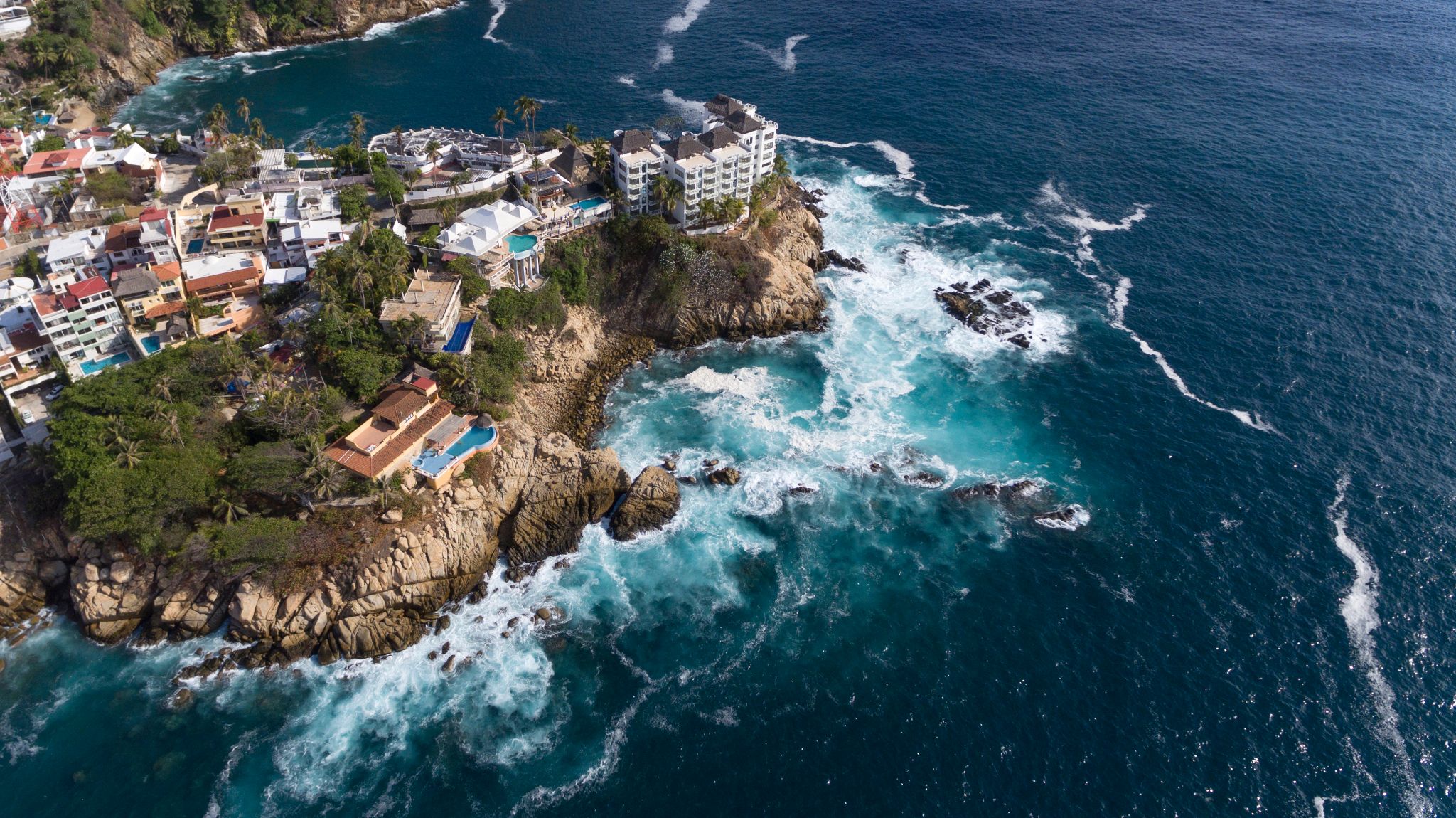 Day 7: 09:00-18:00
Day 7: 09:00-18:00Acapulco / Mexico
-
 Day 8:
Day 8:Day at sea / Sea
-
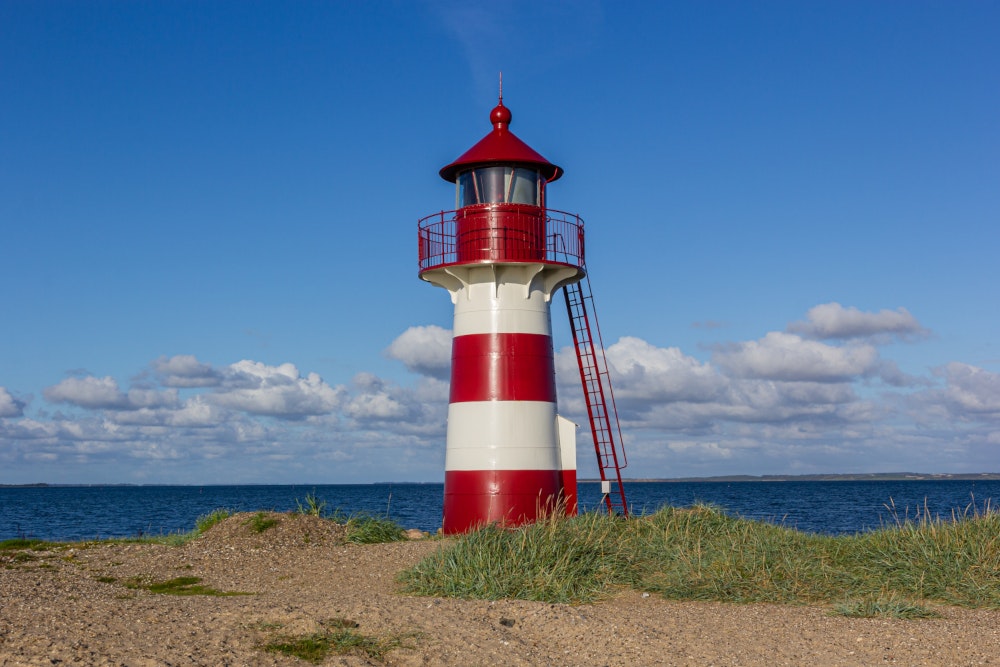 Day 9: 08:00-17:00
Day 9: 08:00-17:00Puerto Quetzal / Guatemala
-
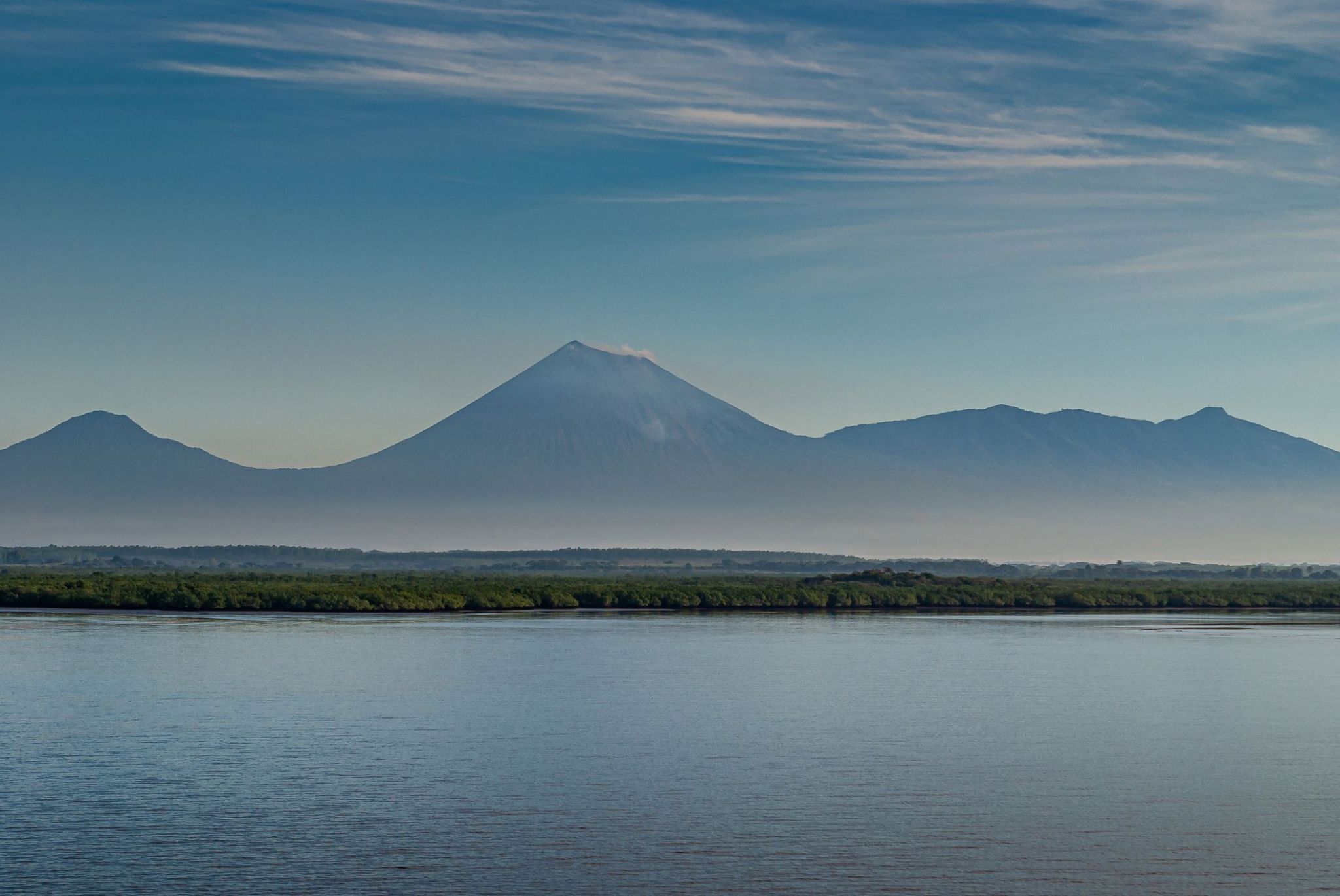 Day 10: 08:00-16:00
Day 10: 08:00-16:00Corinto / Nicaragua
Corinto — the port heart of the country on the Pacific coast.
Corinto is Nicaragua’s largest seaport, located on the Pacific coast in the department of Chinandega. Founded in 1858, the city has played and continues to play a key role in the country’s economy by handling most of its international maritime trade. Thanks to its strategic location and natural harbor, Corinto has become a major logistics hub for cargo transport and maritime connections. Cruise ships also dock here, making it a popular gateway to the region for travelers.
Despite its industrial character, Corinto maintains the authentic charm of a small coastal town. Visitors can enjoy quiet beaches, fresh seafood, and explore nearby natural attractions such as the Casitas volcano and local islands. Historical buildings, colonial architecture, and a warm climate give the city a unique charm. Corinto is also known for its vibrant traditions — colorful religious and folk festivals highlight the culture and spirit of the region.
-
 Day 11: 09:00-18:00
Day 11: 09:00-18:00Puntarenas / Costa Rica
Puntarenas is the capital and largest city in the Province of Puntarenas, on the Pacific coast of Costa Rica.
-
 Day 12:
Day 12:Day at sea / Sea
-
 Day 13:
Day 13:Day at sea / Sea
-
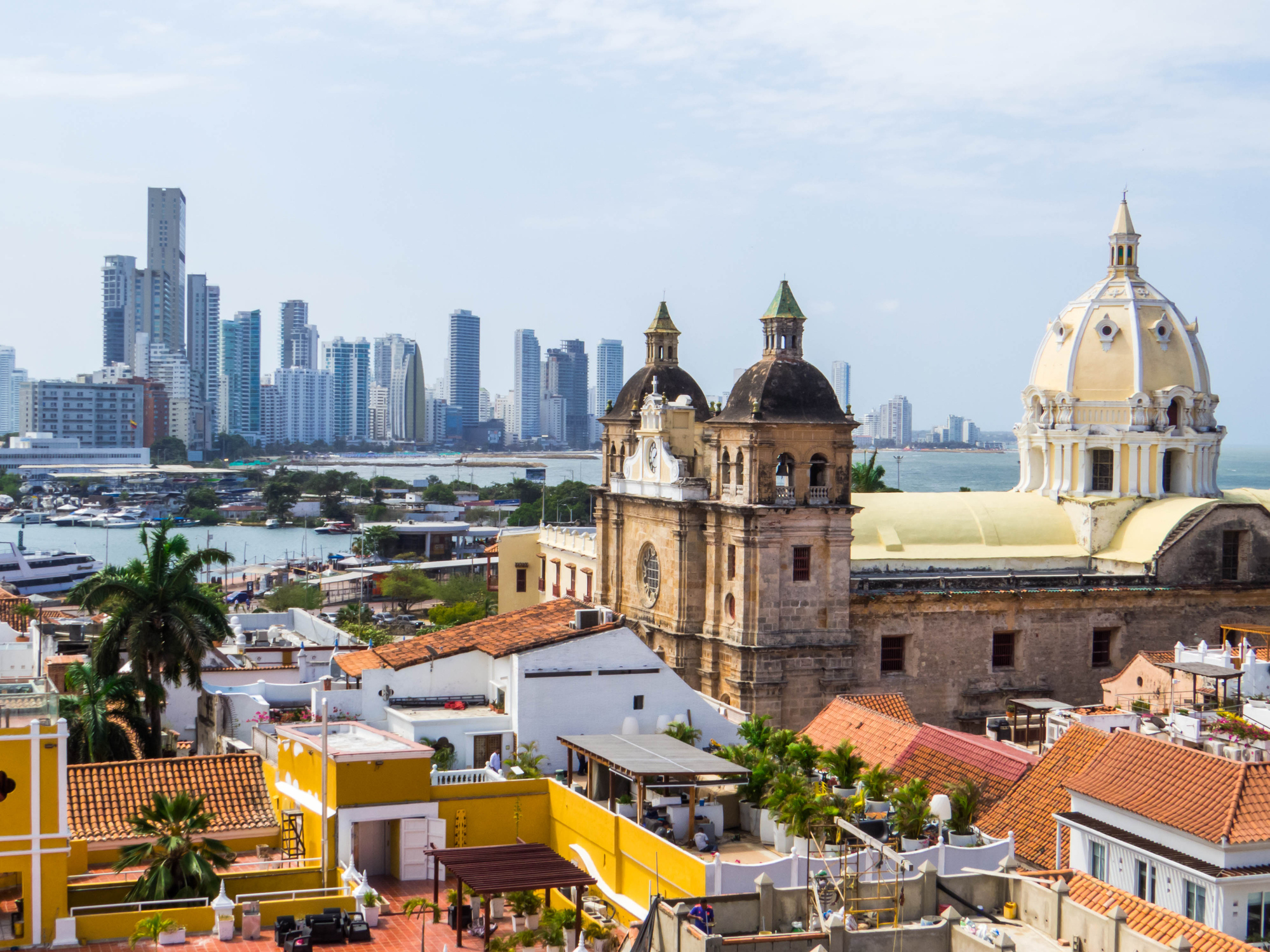 Day 14: 10:00-17:00
Day 14: 10:00-17:00Cartagena Bolivar / Colombia
The city of Cartagena, known in the colonial era as Cartagena de Indias, is a major port founded in 1533, located on the northern coast of Colombia in the Caribbean Coast Region. It was strategically located between the Magdalena and Sinú rivers and became the main port for trade between Spain and its overseas empire, establishing its importance by the early 1540s. During the colonial era it was a key port for the export of Peruvian silver to Spain and for the import of enslaved Africans under the asiento system. It was defensible against pirate attacks in the Caribbean. It is the capital of the Bolívar Department, and had a population 971,592 as of 2016. It is the fifth-largest city in Colombia and the second largest in the region, after Barranquilla. The urban area of Cartagena is also the fifth-largest urban area in the country. Economic activities include the maritime and petrochemicals industries, as well as tourism.
The city was founded on June 1, 1533, and named after Cartagena, Spain, settlement in the region around Cartagena Bay by various indigenous people dates back to 4000 BC. During the Spanish colonial period Cartagena served a key role in administration and expansion of the Spanish empire. It was a center of political, ecclesiastical, and economic activity. In 1984, Cartagena's colonial walled city and fortress were designated a UNESCO World Heritage Site.
-
 Day 15:
Day 15:Day at sea / Sea
-
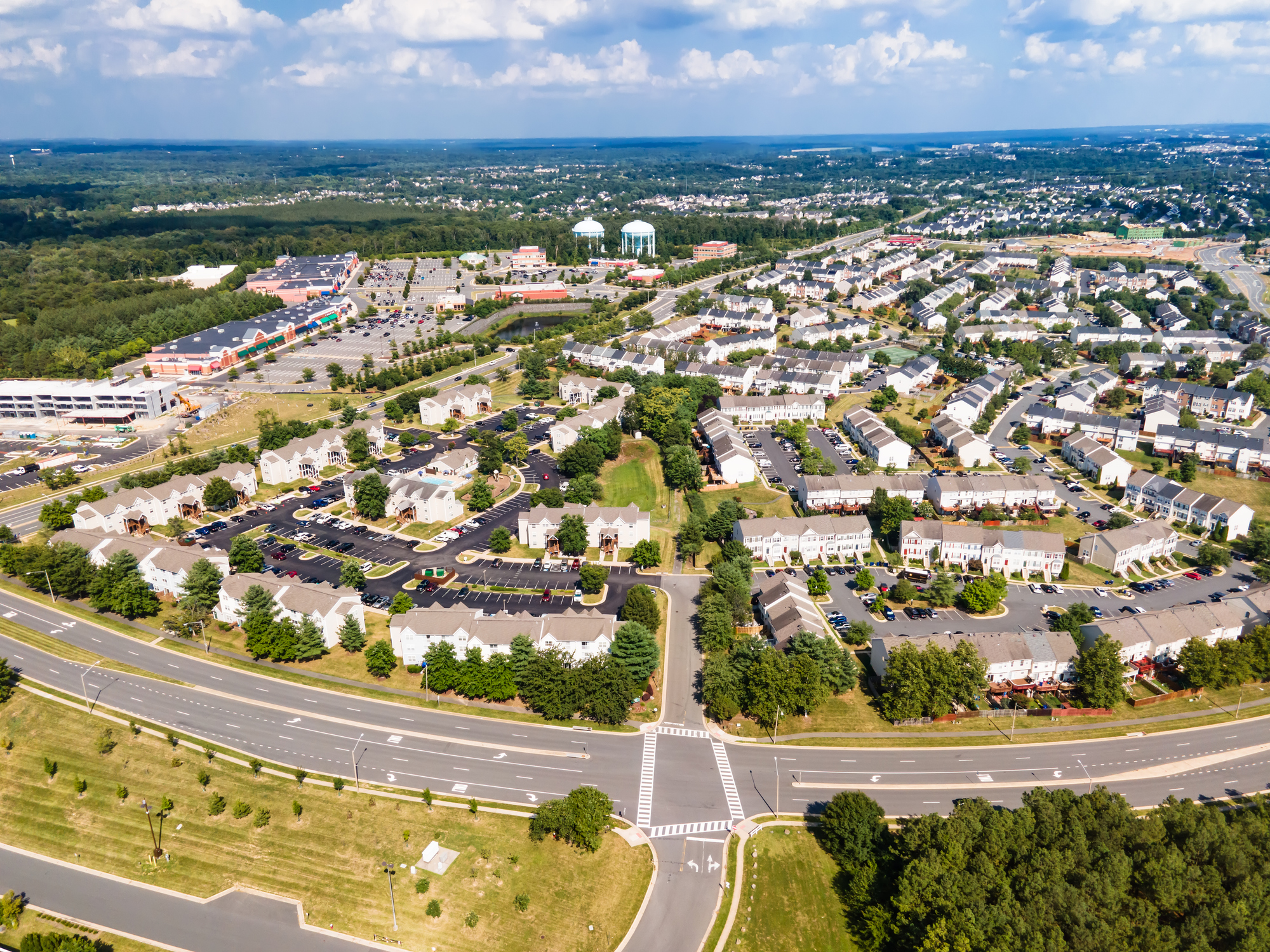 Day 16: 09:00-18:00
Day 16: 09:00-18:00Leesburg / USA
-
 Day 17:
Day 17:Day at sea / Sea
-
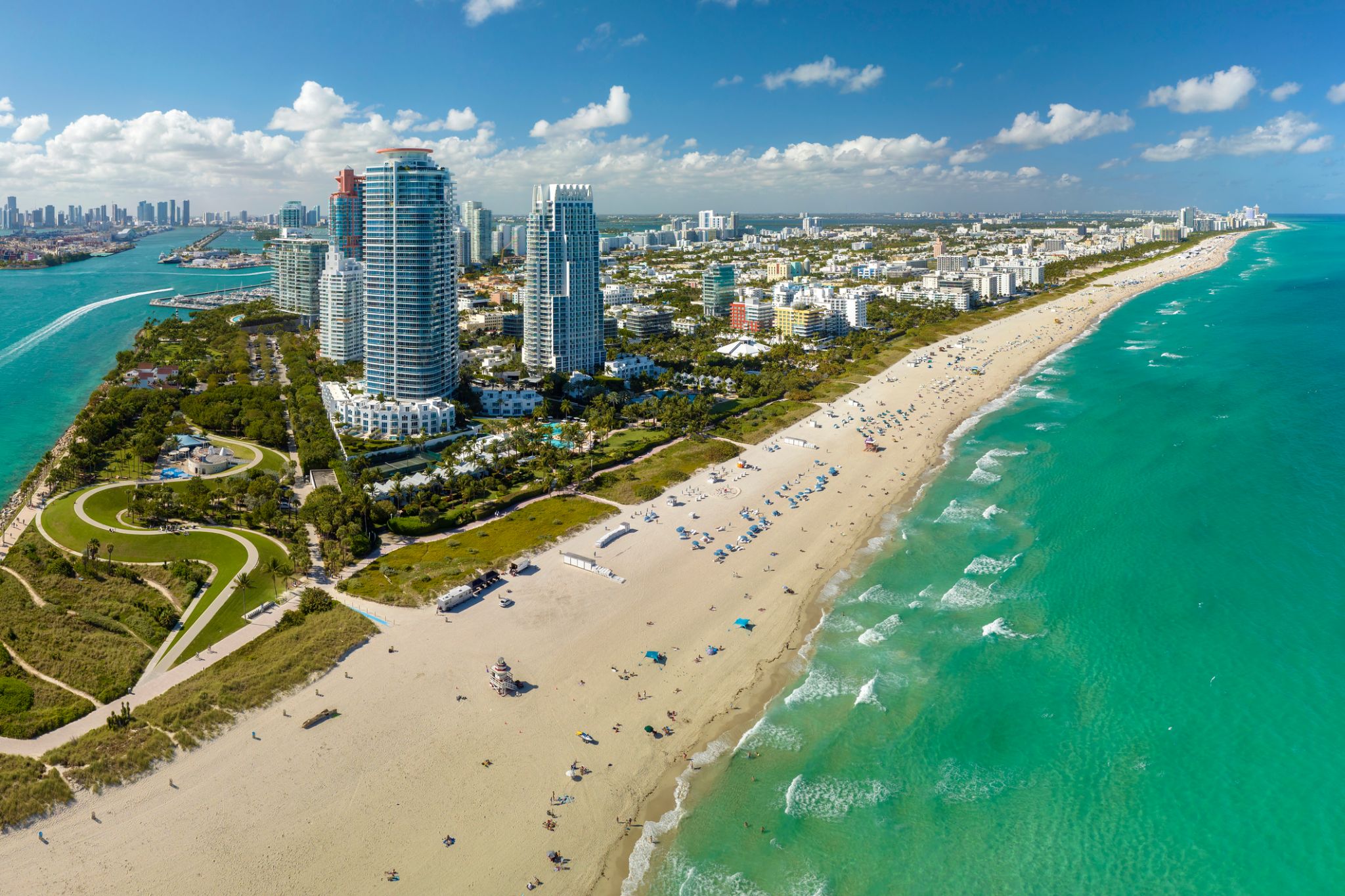 Day 18: 07:00-18:00
Day 18: 07:00-18:00Miami / USA
Miami, officially the City of Miami, is the cultural, economic and financial center of South Florida. Miami is the seat of Miami-Dade County, the most populous county in Florida. The city covers an area of about 56.6 square miles (147 km2), between the Everglades to the west and Biscayne Bay on the east; with a 2017 estimated population of 463,347, Miami is the sixth most densely populated major city in the United States. The Miami metropolitan area is home to 6.1 million people and the seventh-largest metropolitan area in the nation. Miami's metro area is the second-most populous metropolis in the southeastern United States and fourth-largest urban area in the U.S.
Miami is a major center, and a leader in finance, commerce, culture, media, entertainment, the arts, and international trade. The Miami Metropolitan Area is by far the largest urban economy in Florida and the 12th largest in the United States with a GDP of $344.9 billion as of 2017. In 2012, Miami was classified as an "Alpha−" level world city in the World Cities Study Group's inventory. In 2010, Miami ranked seventh in the United States and 33rd among global cities in terms of business activity, human capital, information exchange, cultural experience, and political engagement. In 2008, Forbes magazine ranked Miami "America's Cleanest City", for its year-round good air quality, vast green spaces, clean drinking water, clean streets, and citywide recycling programs. According to a 2009 UBS study of 73 world cities, Miami was ranked as the richest city in the United States, and the world's seventh-richest city in terms of purchasing power. Miami is nicknamed the "Capital of Latin America" and is the largest city with a Cuban-American plurality.
Greater Downtown Miami has one of the largest concentrations of international banks in the United States, and is home to many large national and international companies. The Civic Center is a major center for hospitals, research institutes, medical centers, and biotechnology industries. For more than two decades, the Port of Miami, known as the "Cruise Capital of the World", has been the number one cruise passenger port in the world. It accommodates some of the world's largest cruise ships and operations, and is the busiest port in both passenger traffic and cruise lines. Metropolitan Miami is also a major tourism hub in the southeastern U.S. for international visitors, ranking number two in the country after New York City.
-
 Day 19:
Day 19:Day at sea / Sea
-
 Day 20:
Day 20:Day at sea / Sea
-
 Day 21: 09:00-17:00
Day 21: 09:00-17:00Gustavia / Saint Bartholomew Island
-
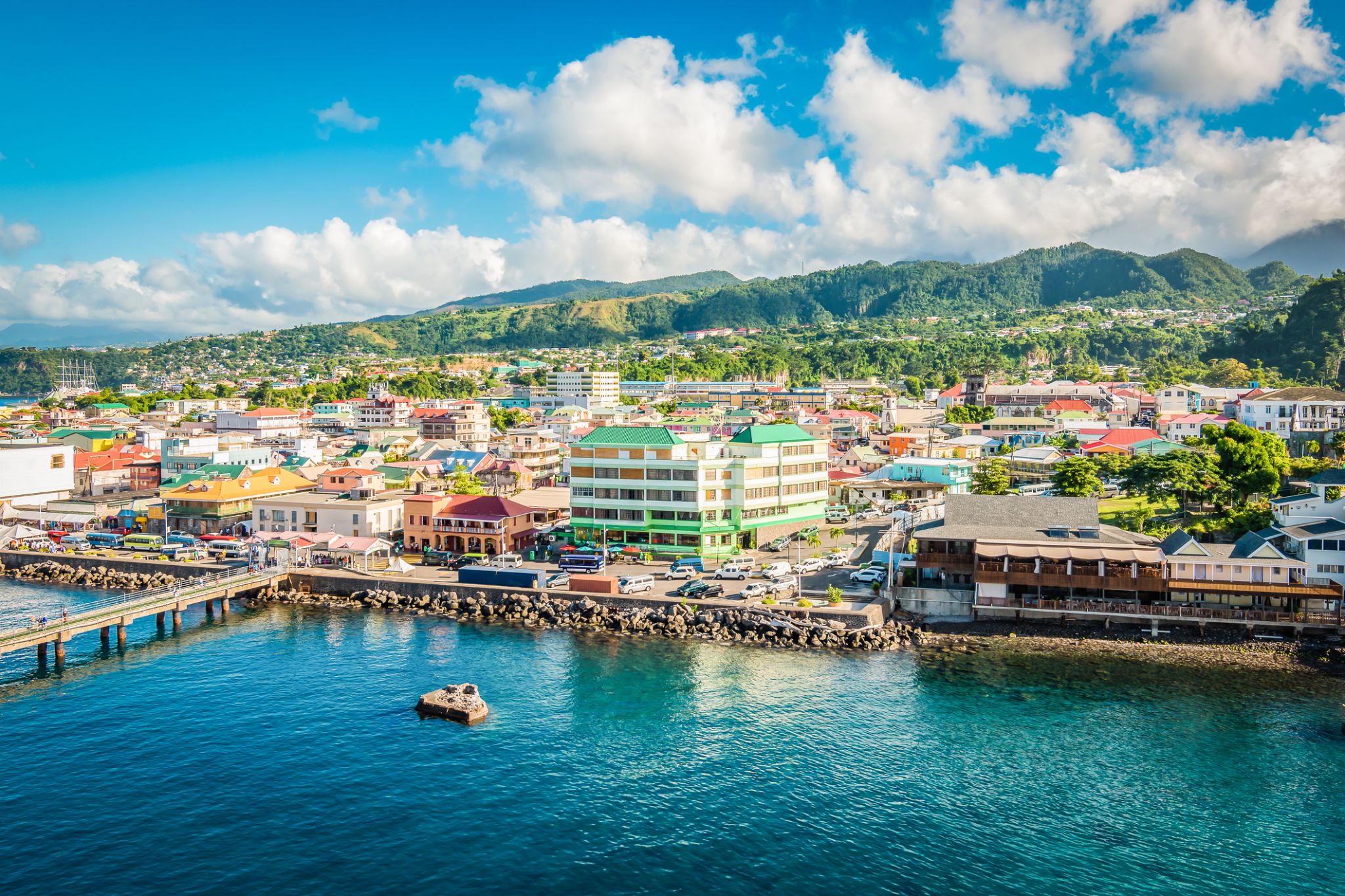 Day 22: 07:00-17:00
Day 22: 07:00-17:00Roseau / Dominica
Dominica, officially the Commonwealth of Dominica, is an island country in the West Indies. The capital, Roseau, is located on the western side of the island. It is part of the Windward Islands in the Lesser Antilles archipelago in the Caribbean Sea. The island is located near Guadeloupe to the northwest and Martinique to the south-southeast. Its area is 750 km2 (290 sq mi), and the highest point is Morne Diablotins, at 1,447 m (4,747 ft) in elevation. The population was 71,293 at the 2011 census. The Commonwealth of Dominica is one of the Caribbean's few republics.
The island was originally inhabited by the Kalinago and later colonised by Europeans, predominantly by the French from the 1690s to 1763. Columbus is said to have passed the island on Sunday 3 November 1493, and the island's name is derived from the Latin for "Sunday". Great Britain took possession in 1763 after the Seven Years' War, and it gradually established English as its official language. The island republic gained independence in 1978.
Its name is pronounced with emphasis on the third syllable, related to its French name of Dominique. Dominica has been nicknamed the "Nature Isle of the Caribbean" for its natural environment. It is the youngest island in the Lesser Antilles, and in fact it is still being formed by geothermal-volcanic activity, as evidenced by the world's second-largest hot spring, called Boiling Lake. The island has lush mountainous rainforests, and it is the home of many rare plants, animals, and bird species. There are xeric areas in some of the western coastal regions, but heavy rainfall occurs inland. The Sisserou parrot, also known as the imperial amazon and found only on Dominica, is the island's national bird and featured on the national flag, which is one of only two national flags containing the color purple.
-
 Day 23: 07:00-17:00
Day 23: 07:00-17:00Bridgetown Barbados / Barbados
-
 Day 24:
Day 24:Day at sea / Sea
-
 Day 25: 10:00-17:00
Day 25: 10:00-17:00Devil’s Point / Bahamas
-
 Day 26:
Day 26:Day at sea / Sea
-
 Day 27: 08:00-16:00
Day 27: 08:00-16:00Belen / Brazil
-
 Day 28:
Day 28:Day at sea / Sea
-
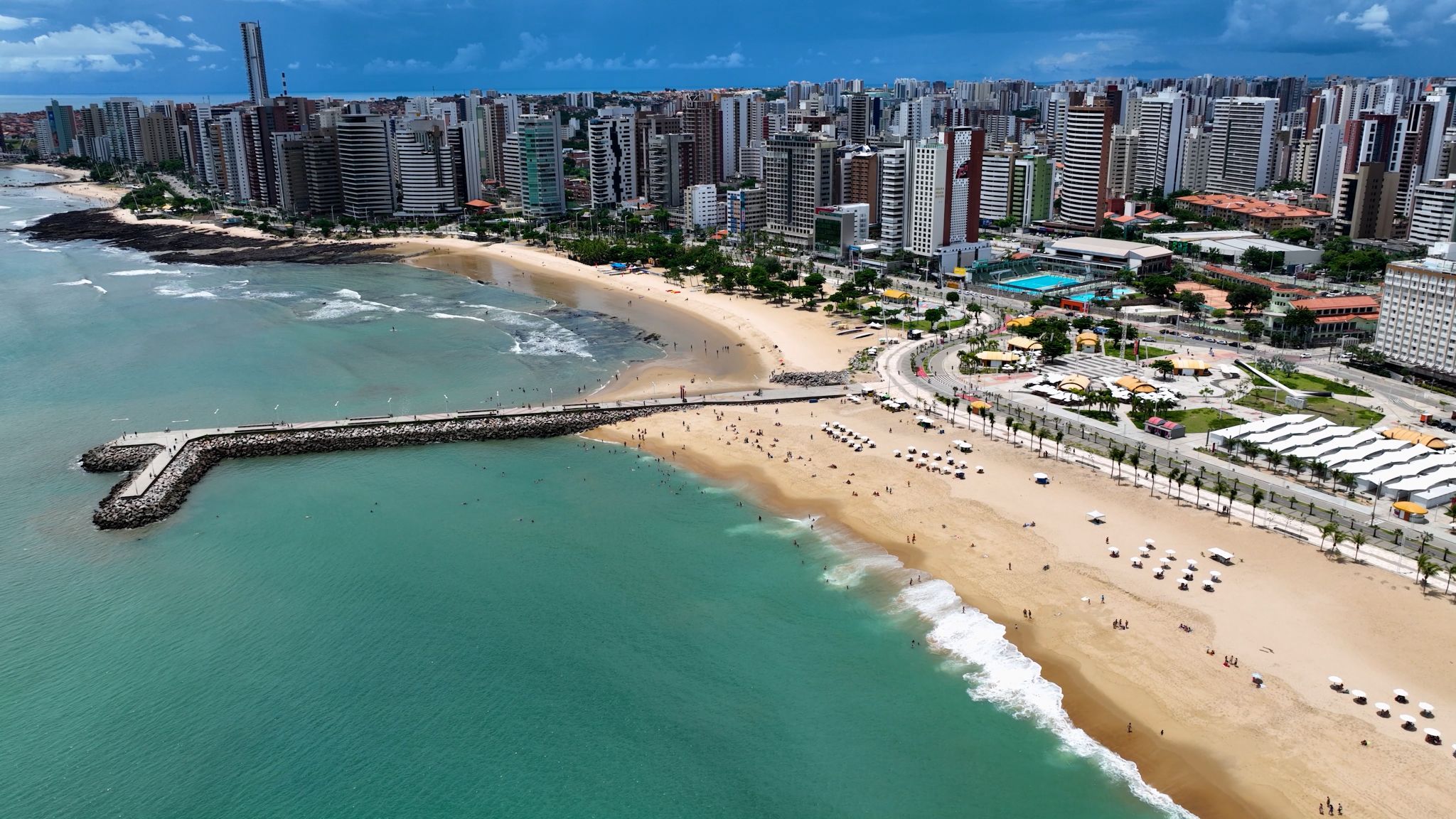 Day 29: 11:00-20:00
Day 29: 11:00-20:00Fortaleza / Brazil
Fortaleza is the capital of the state of Ceará, which is located in the northeast of Brazil. Translated from Portuguese, "Fortaleza" means "fortress." As the fifth-largest city in Brazil, it is also considered one of the most important cities in the region. Visiting Fortaleza, you can admire many famous buildings, such as the José de Alencar Theater, the Fortaleza Cathedral, the Palácio da Luz, and many other fascinating places. Like all cities in Brazil, Fortaleza delights its guests with a special energy and cheerfulness.
-
 Day 30:
Day 30:Day at sea / Sea
-
 Day 31:
Day 31:Day at sea / Sea
-
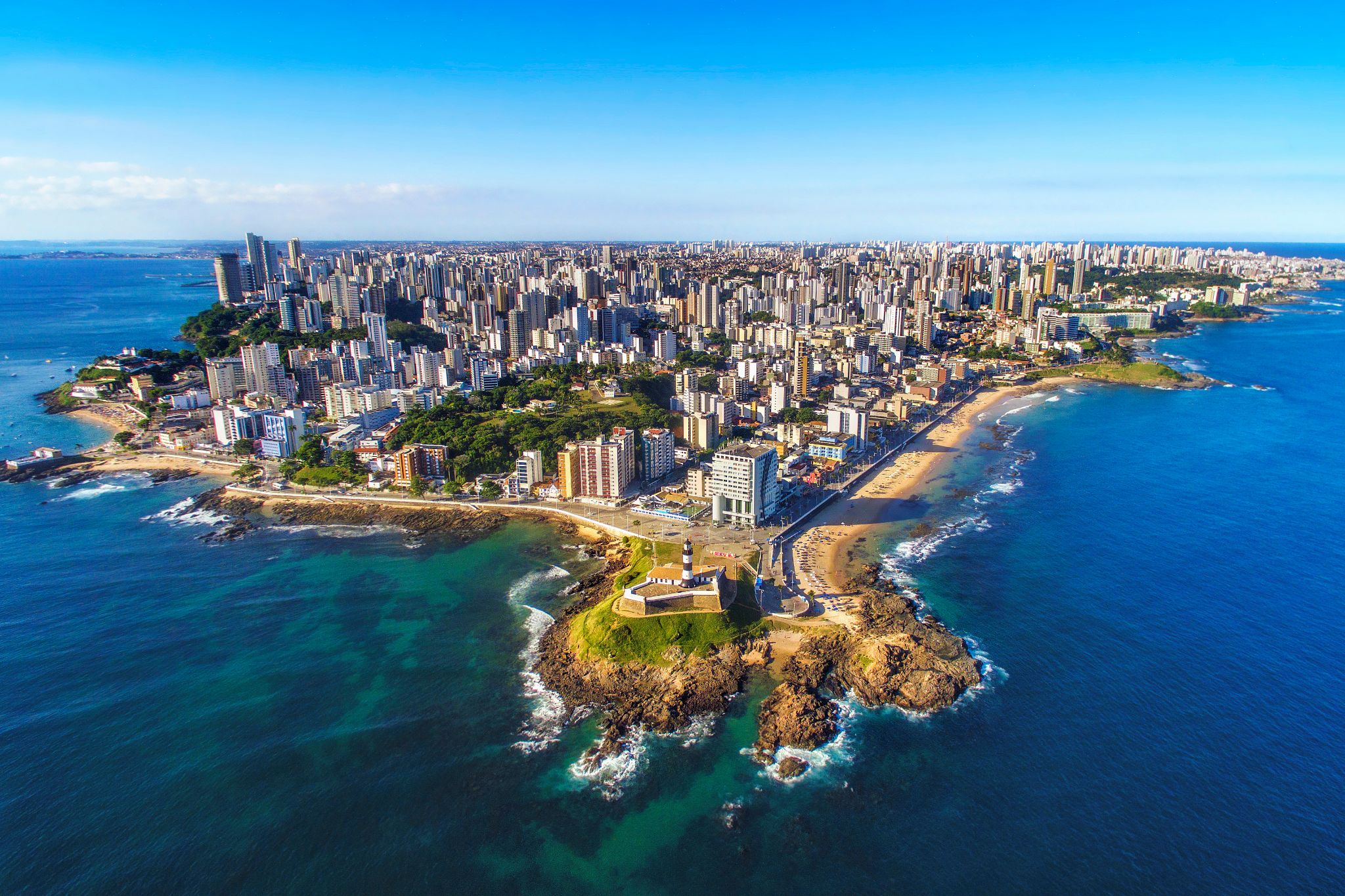 Day 32: 07:00-18:00
Day 32: 07:00-18:00Salvador / Brazil
Salvador is the capital of Bahia state and was formerly the first capital of Brazil. Salvador is known for its endless number of churches, as well as for being a land of majestic fortresses. After visiting these places, it is also worth taking a look at the Chapada Diamantina National Park – the most interesting natural park in Brazil. In Salvador, there reigns an atmosphere of joy, revelry, and holidays – this is due to the fact that the local population was influenced by Africa. In Salvador, you can always admire the natural beauty of this area. You will be enchanted by the sensuality of this land, and you will be able to discover a piece of its mysterious power.
-
 Day 33:
Day 33:Day at sea / Sea
-
 Day 34: 10:00-19:00
Day 34: 10:00-19:00Armacao dos Buzios / Brazil
Armação dos Búzios, often referred to as just Búzios, is a resort town and a municipality located in the state of Rio de Janeiro, Brazil. In 2012, its population consisted of 23,463 inhabitants and its area of 69 km². Today, Búzios is a popular getaway from the city and a worldwide tourist site, especially among Brazilians and Argentinians.
In the early 1900s Búzios was an almost unknown village of fishermen. It remained as such until 1964, when the French actress Brigitte Bardot visited Búzios, since then Búzios became popular with the Carioca’s high society, who wanted to escape from the chaotic city life of Rio de Janeiro and enjoy over 23 beaches that the peninsula offers. The city grew to be an international tourist destination.
Today, the peninsula is a travelling site that offers calmness, direct contact with nature and scenic views. The west coast beaches offer calm, clear waters while the east coast ones, facing the open sea, are more wild and draw surfers and water sports enthusiasts. Azeda, Ferradura, João Fernandes and Armação are amongst the most popular beaches in town. At night, Rua das Pedras, Buzios' main street, offers its visitors an active nightlife and a great variety of shopping and restaurants.
-
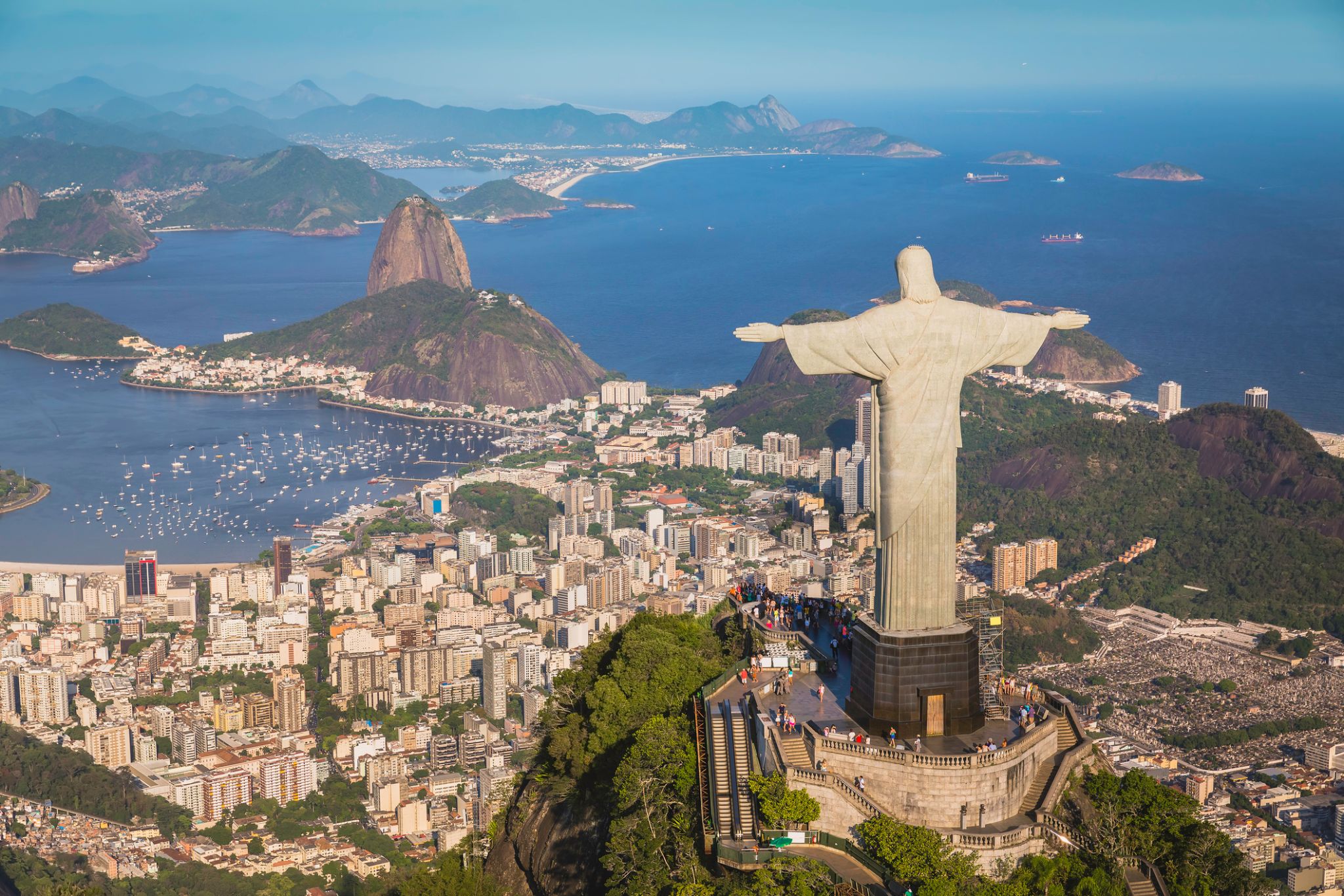 Day 35: 08:00
Day 35: 08:00Rio de Janeiro / Brazil
Rio de Janeiro is the second-most populous municipality in Brazil and the sixth-most populous in the Americas. The metropolis is anchor to the Rio de Janeiro metropolitan area, the second-most populous metropolitan area in Brazil and sixth-most populous in the Americas. Rio de Janeiro is the capital of the state of Rio de Janeiro, Brazil's third-most populous state. Part of the city has been designated as a World Heritage Site, named "Rio de Janeiro: CariocaLandscapes between the Mountain and the Sea", by UNESCO on 1 July 2012 as a Cultural Landscape.
Founded in 1565 by the Portuguese, the city was initially the seat of the Captaincy of Rio de Janeiro, a domain of the Portuguese Empire. Later, in 1763, it became the capital of the State of Brazil, a state of the Portuguese Empire. In 1808, when the Portuguese Royal Court transferred itself from Portugal to Brazil, Rio de Janeiro became the chosen seat of the court of Queen Maria I of Portugal, who subsequently, in 1815, under the leadership of her son, the Prince Regent, and future King João VI of Portugal, raised Brazil to the dignity of a kingdom, within the United Kingdom of Portugal, Brazil, and Algarves. Rio stayed the capital of the pluricontinental Lusitanian monarchy until 1822, when the War of Brazilian Independence began. This is one of the few instances in history that the capital of a colonising country officially shifted to a city in one of its colonies. Rio de Janeiro subsequently served as the capital of the independent monarchy, the Empire of Brazil, until 1889, and then the capital of a republican Brazil until 1960 when the capital was transferred to Brasília.
-
 Day 36:
Day 36:Rio de Janeiro / Brazil
Rio de Janeiro is the second-most populous municipality in Brazil and the sixth-most populous in the Americas. The metropolis is anchor to the Rio de Janeiro metropolitan area, the second-most populous metropolitan area in Brazil and sixth-most populous in the Americas. Rio de Janeiro is the capital of the state of Rio de Janeiro, Brazil's third-most populous state. Part of the city has been designated as a World Heritage Site, named "Rio de Janeiro: CariocaLandscapes between the Mountain and the Sea", by UNESCO on 1 July 2012 as a Cultural Landscape.
Founded in 1565 by the Portuguese, the city was initially the seat of the Captaincy of Rio de Janeiro, a domain of the Portuguese Empire. Later, in 1763, it became the capital of the State of Brazil, a state of the Portuguese Empire. In 1808, when the Portuguese Royal Court transferred itself from Portugal to Brazil, Rio de Janeiro became the chosen seat of the court of Queen Maria I of Portugal, who subsequently, in 1815, under the leadership of her son, the Prince Regent, and future King João VI of Portugal, raised Brazil to the dignity of a kingdom, within the United Kingdom of Portugal, Brazil, and Algarves. Rio stayed the capital of the pluricontinental Lusitanian monarchy until 1822, when the War of Brazilian Independence began. This is one of the few instances in history that the capital of a colonising country officially shifted to a city in one of its colonies. Rio de Janeiro subsequently served as the capital of the independent monarchy, the Empire of Brazil, until 1889, and then the capital of a republican Brazil until 1960 when the capital was transferred to Brasília.
-
 Day 37: 18:00
Day 37: 18:00Rio de Janeiro / Brazil
Rio de Janeiro is the second-most populous municipality in Brazil and the sixth-most populous in the Americas. The metropolis is anchor to the Rio de Janeiro metropolitan area, the second-most populous metropolitan area in Brazil and sixth-most populous in the Americas. Rio de Janeiro is the capital of the state of Rio de Janeiro, Brazil's third-most populous state. Part of the city has been designated as a World Heritage Site, named "Rio de Janeiro: CariocaLandscapes between the Mountain and the Sea", by UNESCO on 1 July 2012 as a Cultural Landscape.
Founded in 1565 by the Portuguese, the city was initially the seat of the Captaincy of Rio de Janeiro, a domain of the Portuguese Empire. Later, in 1763, it became the capital of the State of Brazil, a state of the Portuguese Empire. In 1808, when the Portuguese Royal Court transferred itself from Portugal to Brazil, Rio de Janeiro became the chosen seat of the court of Queen Maria I of Portugal, who subsequently, in 1815, under the leadership of her son, the Prince Regent, and future King João VI of Portugal, raised Brazil to the dignity of a kingdom, within the United Kingdom of Portugal, Brazil, and Algarves. Rio stayed the capital of the pluricontinental Lusitanian monarchy until 1822, when the War of Brazilian Independence began. This is one of the few instances in history that the capital of a colonising country officially shifted to a city in one of its colonies. Rio de Janeiro subsequently served as the capital of the independent monarchy, the Empire of Brazil, until 1889, and then the capital of a republican Brazil until 1960 when the capital was transferred to Brasília.
-
 Day 38: 07:00-18:00
Day 38: 07:00-18:00Big Island, Big Island / Brazil
-
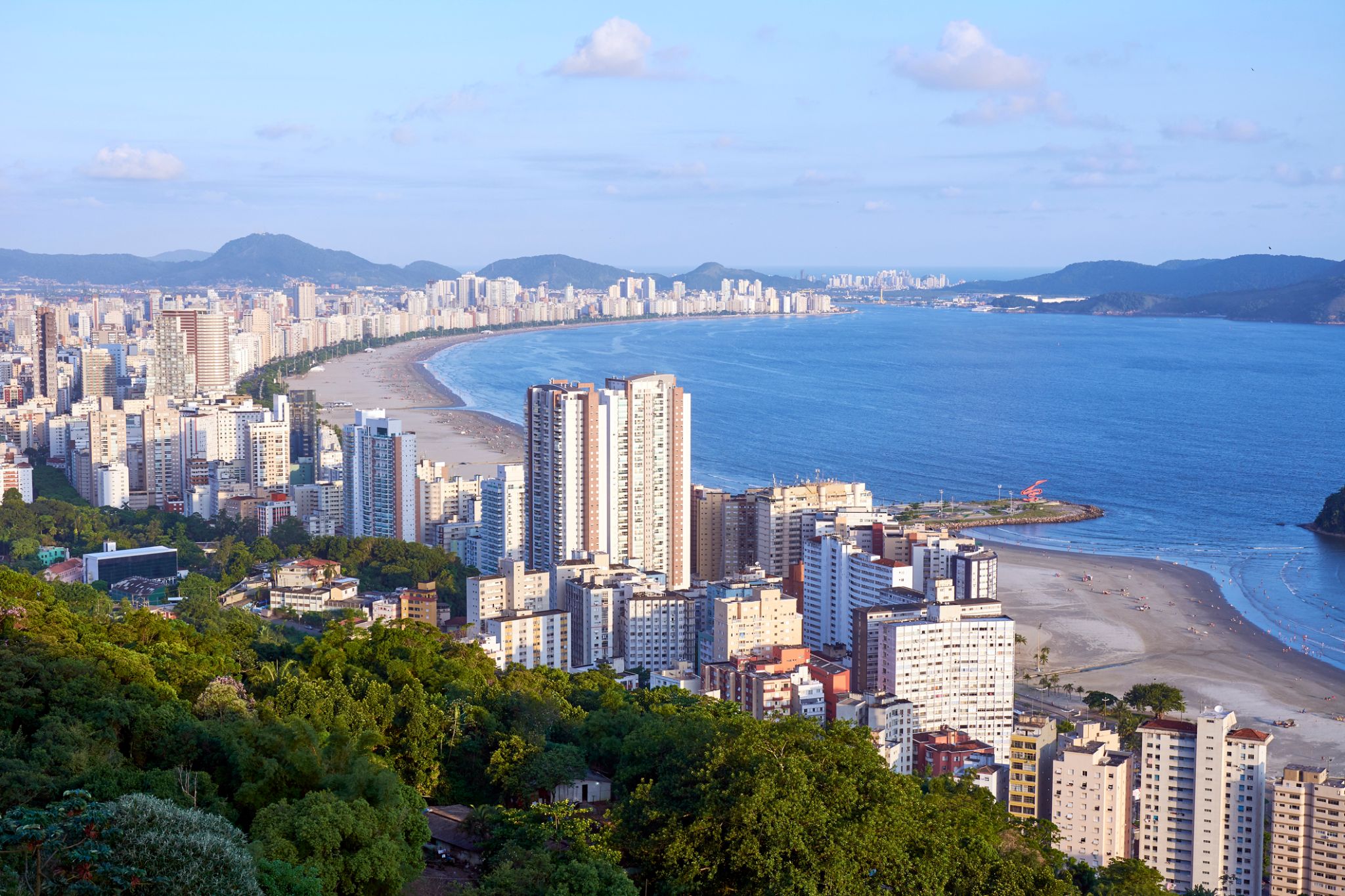 Day 39: 07:00-18:00
Day 39: 07:00-18:00Santos / Brazil
-
 Day 40: 09:00-18:00
Day 40: 09:00-18:00Porto Belo / Brazil
-
 Day 41:
Day 41:Day at sea / Sea
-
 Day 42: 07:00-16:00
Day 42: 07:00-16:00Rio Grande - Rio Grande do Sul / Brazil
-
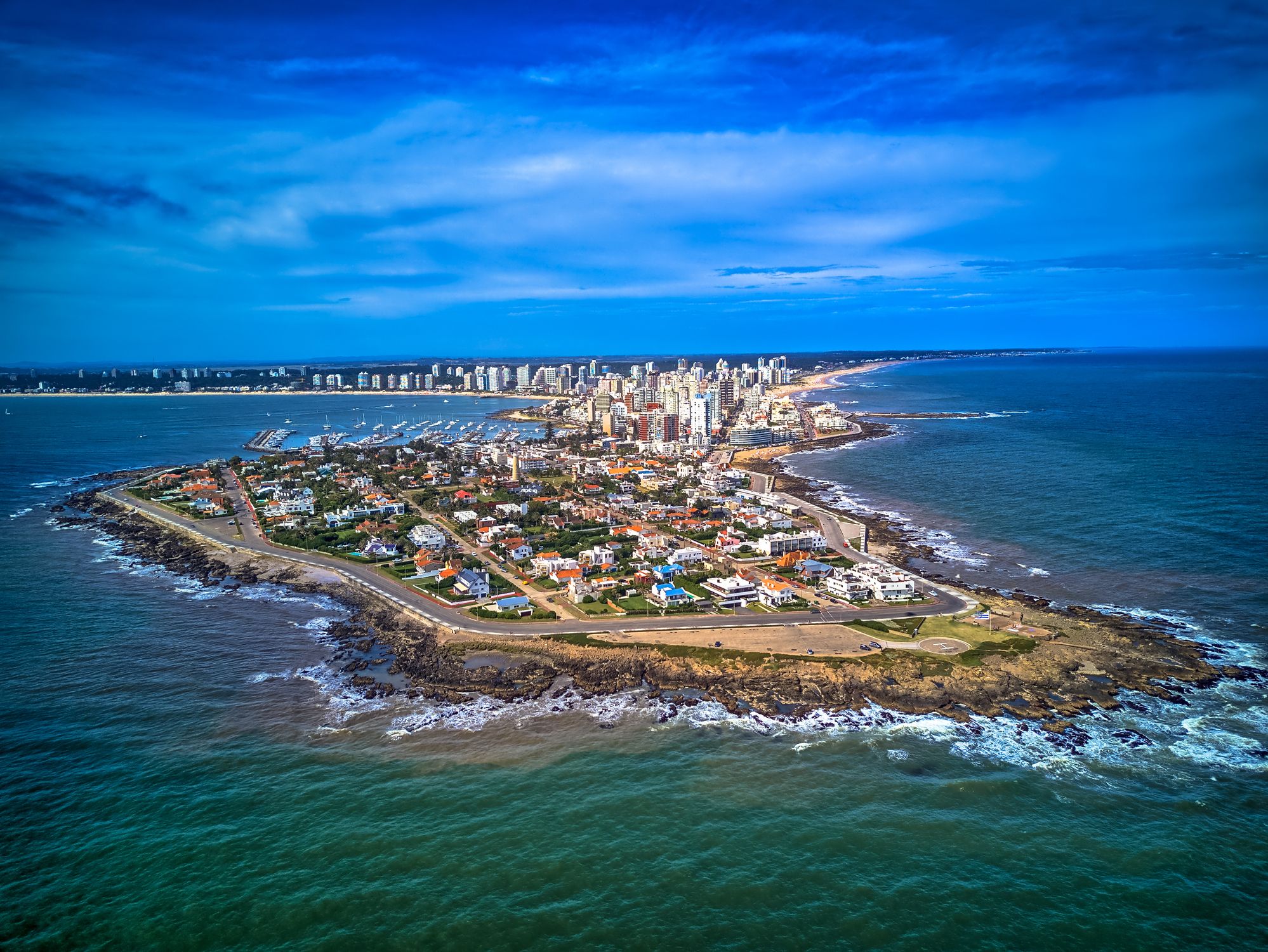 Day 43: 08:00-18:00
Day 43: 08:00-18:00Punta del Este / Uruguay
Punta del Este — Uruguay’s Premier Resort on the Atlantic Coast
Punta del Este is one of South America’s most renowned resort cities, located on Uruguay’s southern coast where the Atlantic Ocean meets the Río de la Plata estuary. The city is known for its unique contrasts—on one side, upscale neighborhoods with modern skyscrapers, yachts, and gourmet restaurants, and on the other, tranquil sandy beaches, scenic dunes, and surf-friendly waves. It’s often dubbed the “Monaco of South America” for its luxurious infrastructure and popularity among international celebrities.
Beyond the beaches, Punta del Este offers both cultural and natural attractions: the iconic “La Mano” sculpture, the Ralli Museum of contemporary art, and nearby islands home to sea lions. Visitors can explore the bohemian district of La Barra or enjoy sunset views by the Punta del Este lighthouse. The city comes alive during the summer season (December to February), when tourists from around the globe arrive in search of sunshine, comfort, and vibrant nightlife.
-
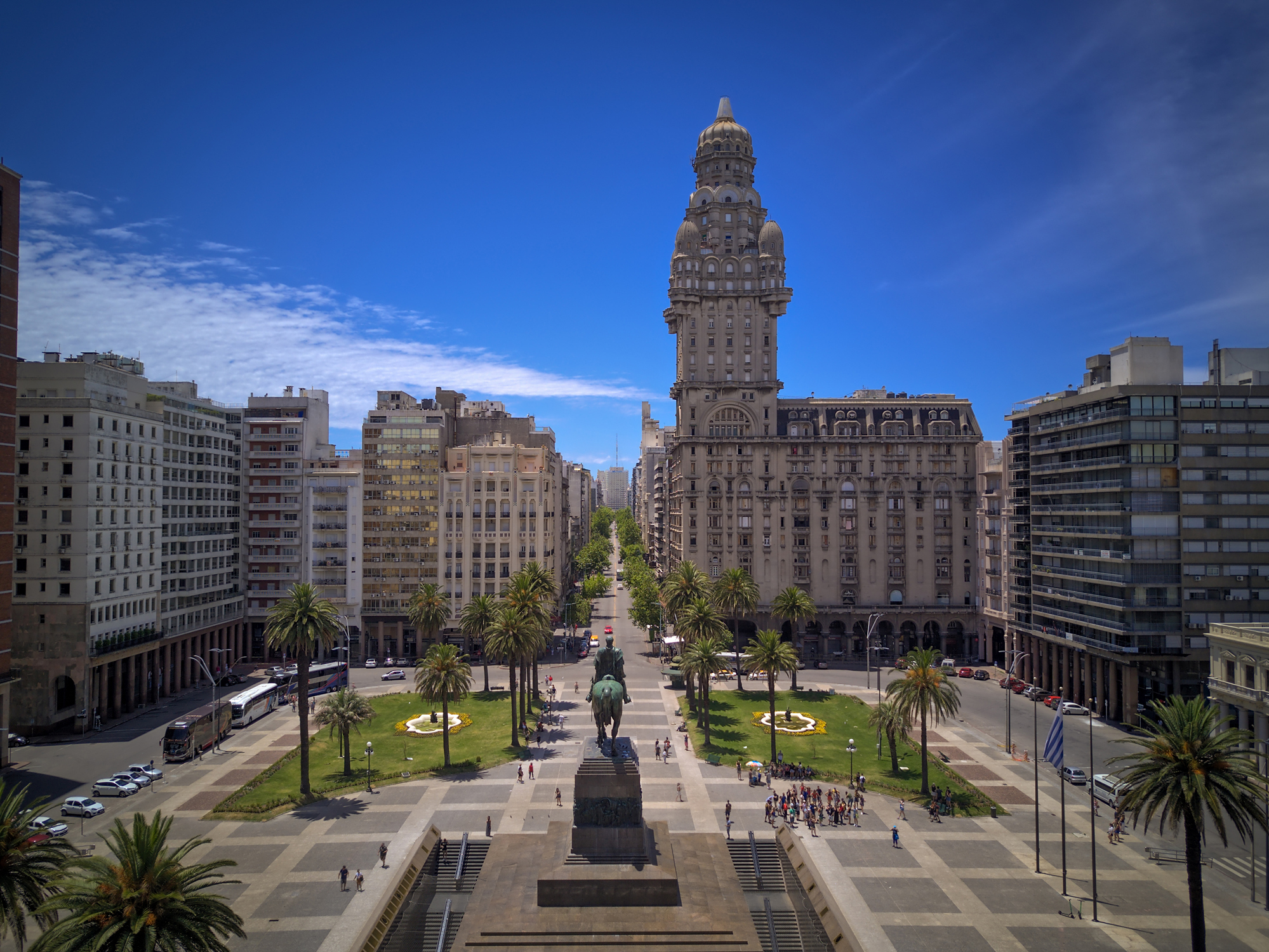 Day 44: 07:00-20:00
Day 44: 07:00-20:00Montevideo / Uruguay
Montevideo is the capital and largest city of Uruguay. According to the 2011 census, the city proper has a population of 1,319,108 (about one-third of the country's total population) in an area of 201 square kilometres (78 sq mi). The southernmost capital city in the Americas, Montevideo is situated on the southern coast of the country, on the northeastern bank of the Río de la Plata.
The city was established in 1724 by a Spanish soldier, Bruno Mauricio de Zabala, as a strategic move amidst the Spanish-Portuguese dispute over the platine region. It was also under brief British rule in 1807. Montevideo is the seat of the administrative headquarters of Mercosur and ALADI, Latin America’s leading trade blocs, a position that entailed comparisons to the role of Brussels in Europe.
-
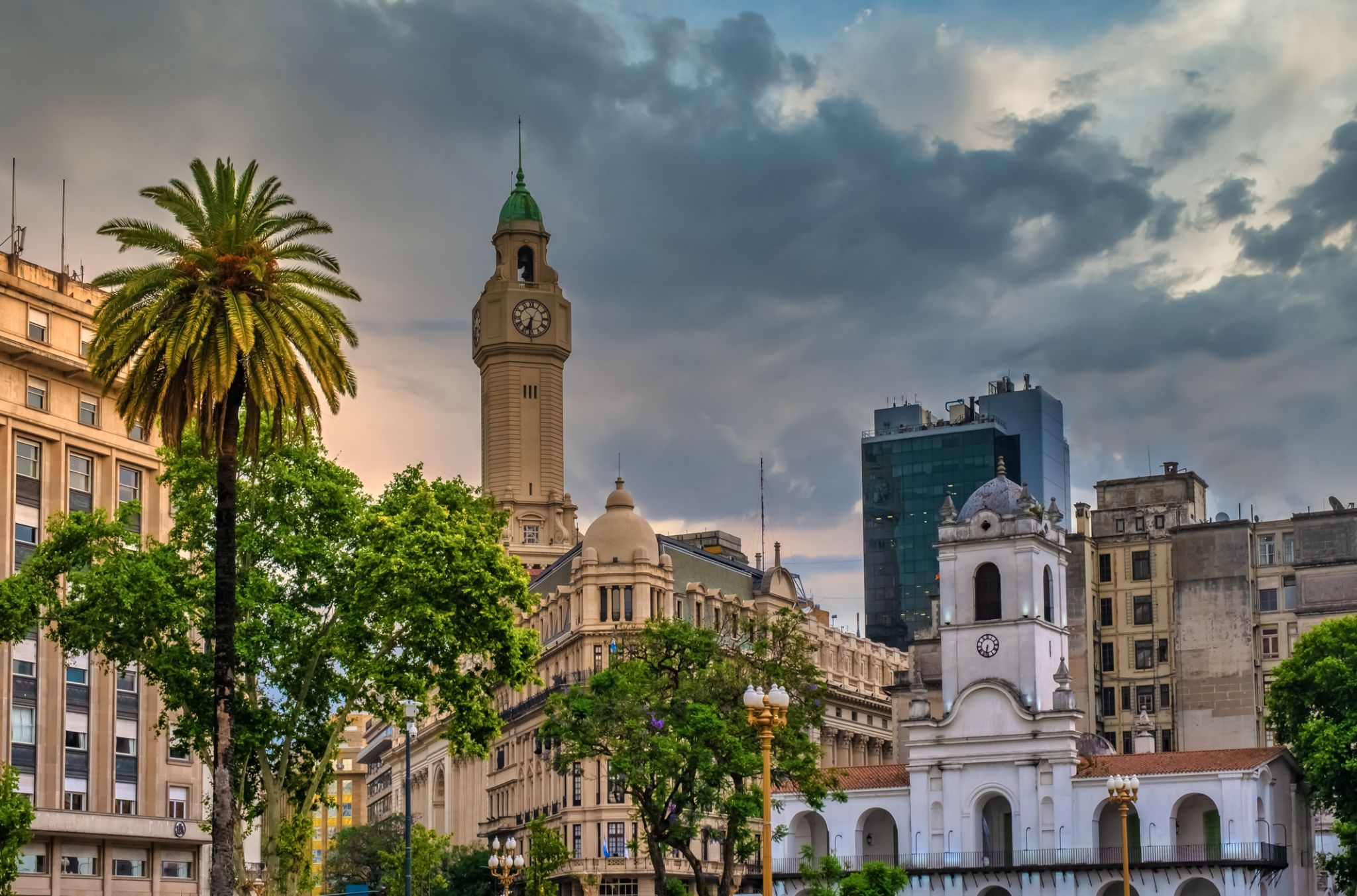 Day 45: 08:00
Day 45: 08:00Buenos Aires / Argentina
the capital city and chief port of Argentina, in the eastern central part of the country, on the Plata River; population 3,042,600 (est. 2008).
-
 Day 46: 18:00
Day 46: 18:00Buenos Aires / Argentina
the capital city and chief port of Argentina, in the eastern central part of the country, on the Plata River; population 3,042,600 (est. 2008).
-
 Day 47: 07:00-18:00
Day 47: 07:00-18:00Montevideo / Uruguay
Montevideo is the capital and largest city of Uruguay. According to the 2011 census, the city proper has a population of 1,319,108 (about one-third of the country's total population) in an area of 201 square kilometres (78 sq mi). The southernmost capital city in the Americas, Montevideo is situated on the southern coast of the country, on the northeastern bank of the Río de la Plata.
The city was established in 1724 by a Spanish soldier, Bruno Mauricio de Zabala, as a strategic move amidst the Spanish-Portuguese dispute over the platine region. It was also under brief British rule in 1807. Montevideo is the seat of the administrative headquarters of Mercosur and ALADI, Latin America’s leading trade blocs, a position that entailed comparisons to the role of Brussels in Europe.
-
 Day 48:
Day 48:Day at sea / Sea
-
 Day 49:
Day 49:Day at sea / Sea
-
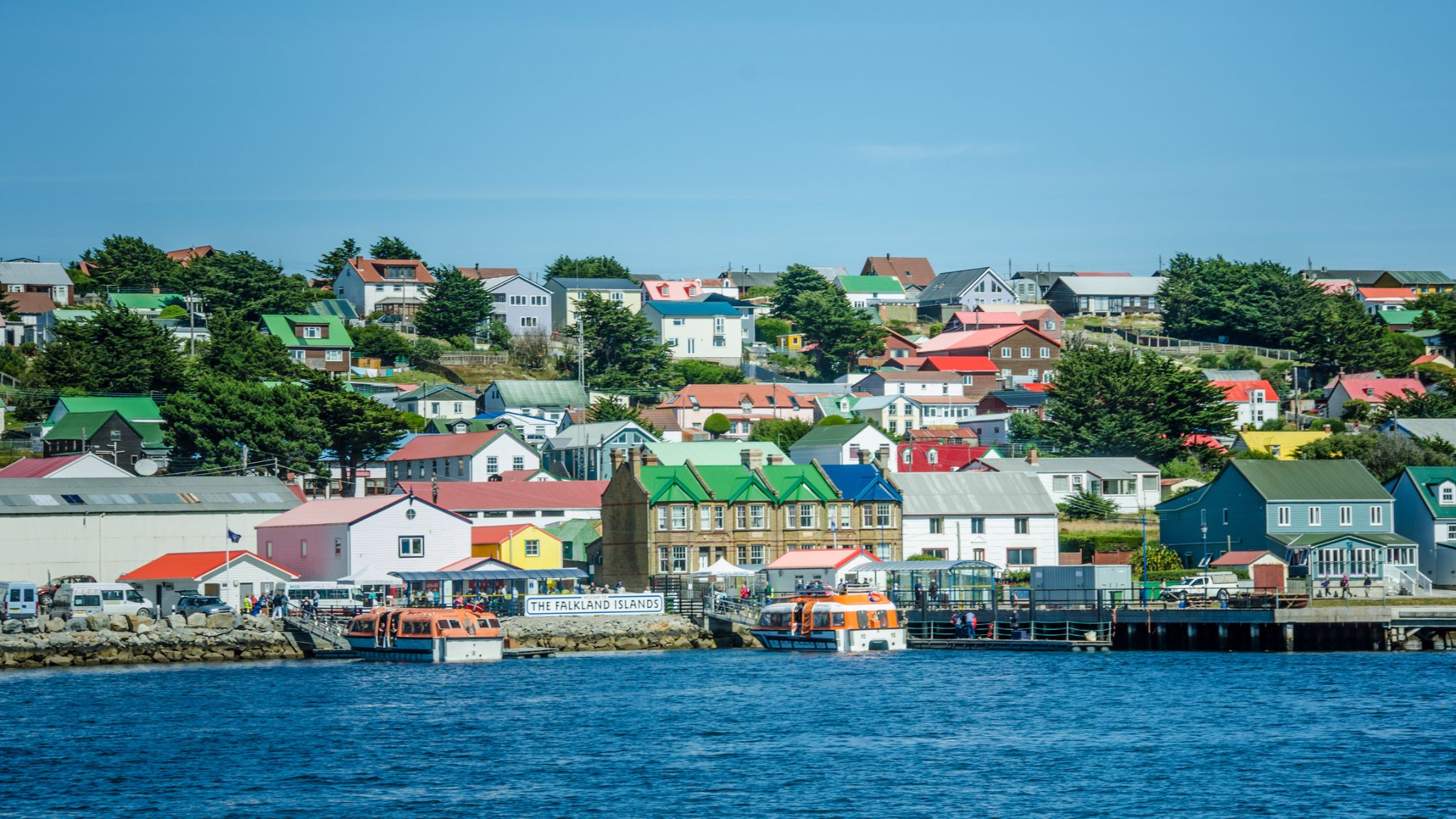 Day 50: 07:00-18:00
Day 50: 07:00-18:00Port Stanley, Falkland Islands / Falkland islands
Stanley is the capital of the Falkland Islands. It is located on the island of East Falkland, on a north-facing slope in one of the wettest parts of the islands. At the 2016 census, the town had a population of 2,460 the entire population of the Falkland Islands was 3,398 on Census Day on 9 October 2016
Stanley is represented by five members of the Legislative Assembly of the Falkland Islands, currently Stacy Bragger, Barry Elsby, Mark Pollard, Roger Spink and Leona Vidal Roberts.
Stanley is the main shopping centre on the islands and the hub of East Falkland's road network. Attractions include the Falkland Islands Museum, Government House – built in 1845 and home to the Governor of the Falkland Islands – and a golf course, as well as a whale-bone arch, a totem pole, several war memorials and the shipwrecks in its harbour. The Falkland Islands Company owns several shops. Stanley has four pubs, 11 hotels and guesthouses, three restaurants, a fish and chip shop and the main tourist office. There are three churches, including the Anglican Christ Church Cathedral, the southernmost Anglican cathedral in the world, and the Roman Catholic St. Mary's Church. A bomb disposal unit in the town is a legacy of the Falklands War.
The town hall serves as a post office, philatelic bureau, law court and dance hall. The police station also contains the islands' only prison, with a capacity of 13 in the cells.
The community centre includes a swimming pool (the only public one in the islands), a sports centre, library, and school. A grass football pitch is located by the community centre and hosts regular games.
Stanley Racecourse, located on the west side of Stanley, holds a two-day horse racing meeting every year on 26 and 27 December. The Christmas races have been held here for over 100 years.
Stanley Golf Course has an 18-hole course and a club house. It is also located to the west of Stanley.
King Edward VII Memorial Hospital is the islands' main hospital, with doctors' practice and surgery, radiology department, dental surgery and emergency facilities.
Several bus and taxi companies operate out of Stanley.
Stanley is also home to the Falkland Islands Radio Station (FIRS), the Stanley office of the British Antarctic Survey, and the office of the weekly Penguin News newspaper.
A nursery and garden centre is also here, in whose greenhouses some of the islands' vegetables are grown.
-
 Day 51:
Day 51:Day at sea / Sea
-
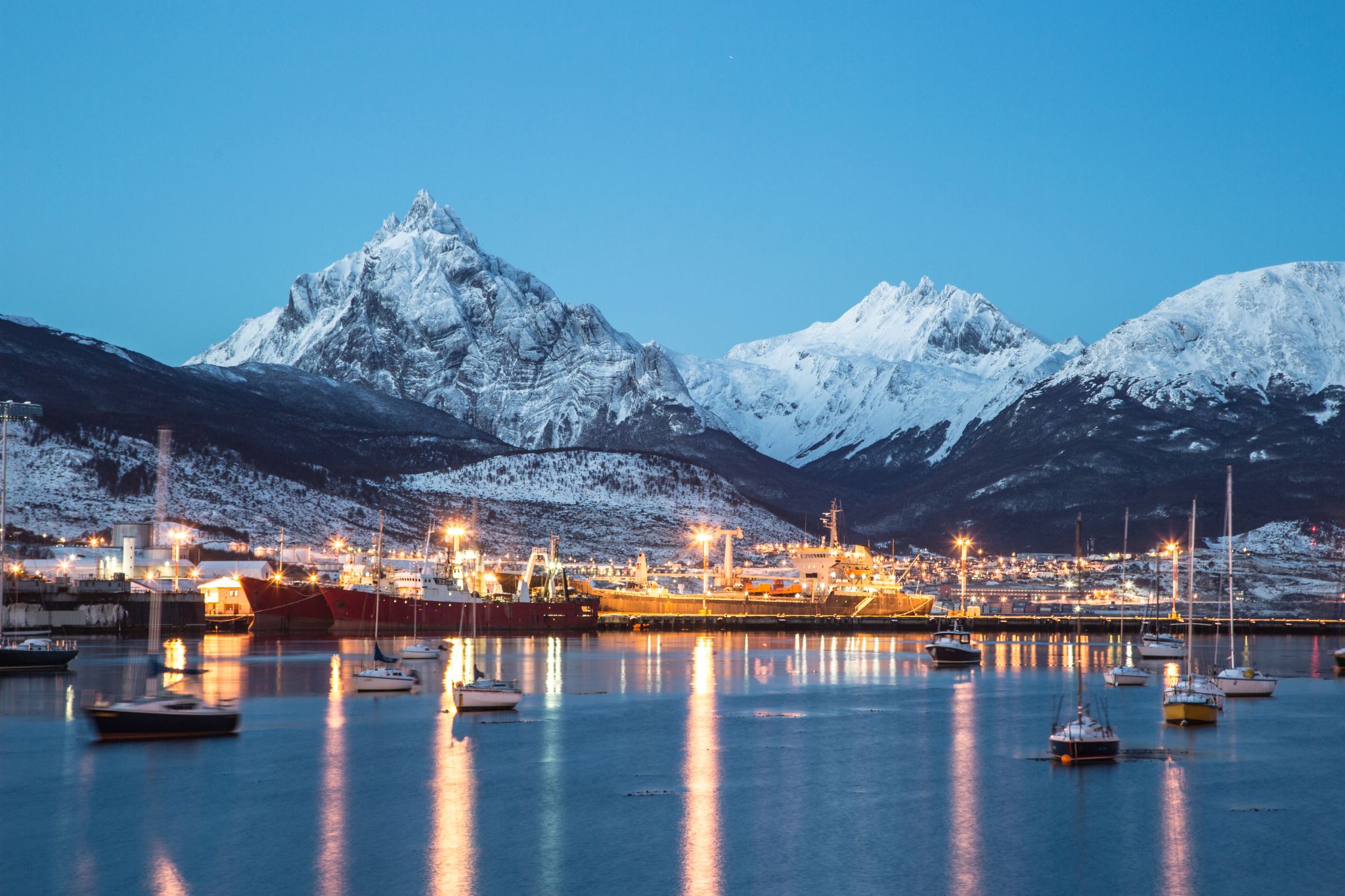 Day 52: 07:00-16:00
Day 52: 07:00-16:00Ushuaia / Argentina
Ushuaia is the capital of Tierra del Fuego, Antártida e Islas del Atlántico Sur Province, Argentina. It is commonly regarded as the southernmost city in the world. Ushuaia is located in a wide bay on the southern coast of Isla Grande de Tierra del Fuego, bounded on the north by the Martial mountain range, and on the south by the Beagle Channel. It is the only municipality in the Department of Ushuaia, which has an area of 9,390 km2 (3,625 sq mi). It was founded October 12 of 1884 by Augusto Lasserreand is located on the shores of the Beagle Channel surrounded by the mountain range of the Martial Glacier, in the Bay of Ushuaia. Besides being an administrative center, it is a light industrial port and tourist hub.
-
 Day 53: 09:00-18:00
Day 53: 09:00-18:00Punta Arenas / Chile
-
 Day 54:
Day 54:Day at sea / Sea
-
 Day 55:
Day 55:Day at sea / Sea
-
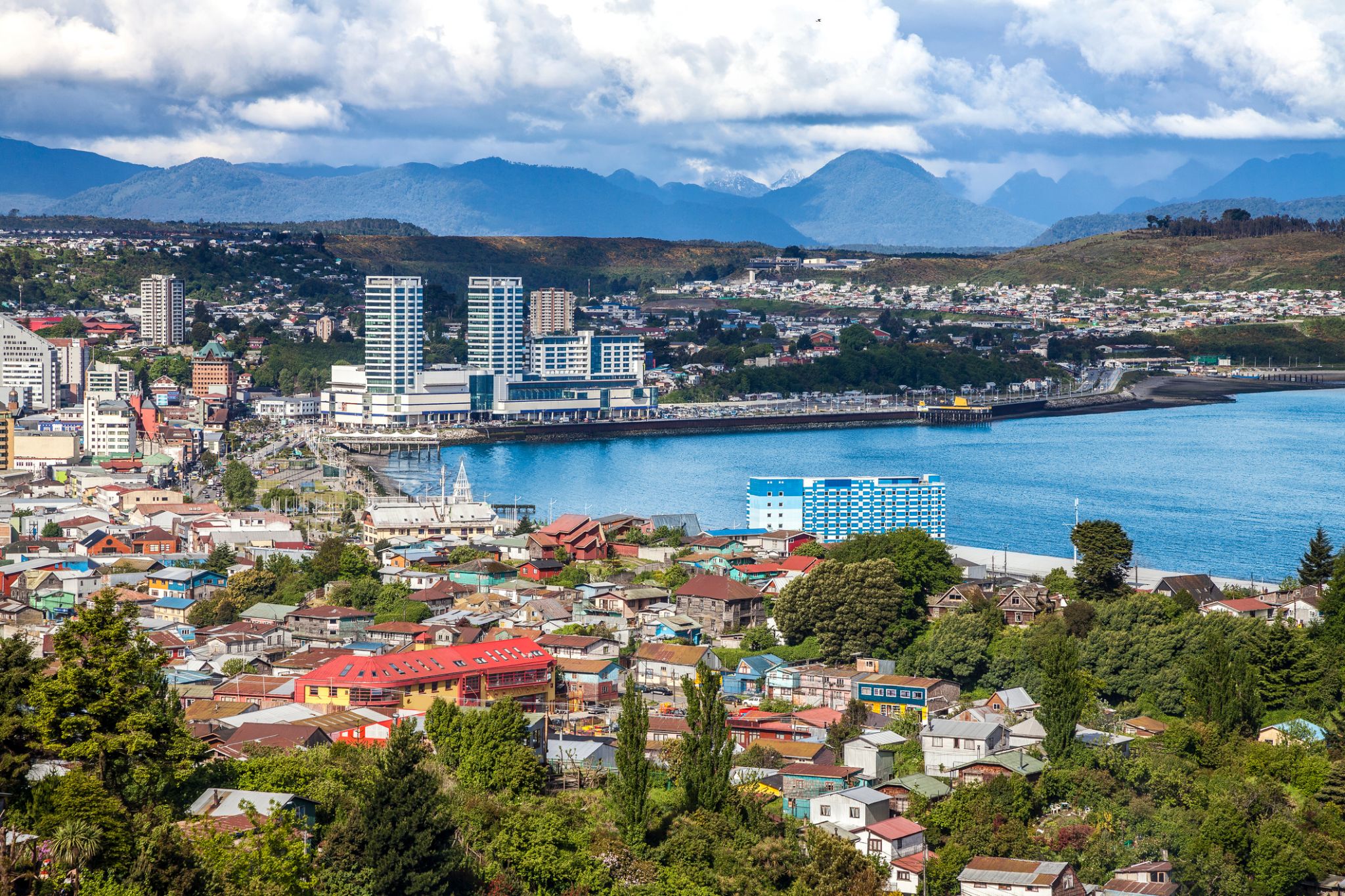 Day 56: 08:00-16:00
Day 56: 08:00-16:00Puerto Montt / Chile
Puerto Montt is a port city and commune in southern Chile, located at the northern end of the Reloncaví Sound in the Llanquihue Province, Los Lagos Region, 1,055 km to the south of the capital, Santiago. The commune spans an area of 1,673 km2 (646 sq mi) and has a population of 245,902 in 2017. It is bounded by the communes of Puerto Varas to the north, Cochamó to the east and southeast, Calbuco to the southwest and Maullín and Los Muermos to the west.
Founded as late as 1853 during the German colonization of southern Chile, Puerto Montt soon outgrew older neighboring cities due to its strategic position at the southern end of the Chilean Central Valley being a gateway city into Chiloé Archipelago, Llanquihue and Nahuel Huapi lakes and Western Patagonia.
Puerto Montt has gained renown and grown significantly due to the rise of Chile as the second largest salmon producer of the world during the 1990s and 2000s. However, the Chilean salmon aquaculture crisis of the late 2000s resulted at least temporarily in severe unemployment and exposed weaknesses in the local economy. The city's cultural heritage mixes elements of Chiloé culture with German heritage although the city has attracted a significant number of newcomers from all over Chile in the last 30 years due to employment opportunities.
-
 Day 57:
Day 57:Day at sea / Sea
-
 Day 58: 08:00-17:00
Day 58: 08:00-17:00SANTIAGO DE CHILE
-
 Day 59: 08:00-17:00
Day 59: 08:00-17:00Coquimbo / Chile
Coquimbo is a port city, commune and capital of the Elqui Province, located on the Pan-American Highway, in the Coquimbo Region of Chile. Coquimbo is situated in a valley 10 km (6 mi) south of La Serena, with which it forms Greater La Serena with more than 400,000 inhabitants. The commune spans an area around the harbor of 1,429.3 km2 (552 sq mi). The average temperature in the city lies around 14 °C (57 °F), and precipitation is low.
-
 Day 60:
Day 60:Day at sea / Sea
-
 Day 61: 08:00-18:00
Day 61: 08:00-18:00Iquique
-
 Day 62:
Day 62:Day at sea / Sea
-
 Day 63: 07:00-19:00
Day 63: 07:00-19:00PISCO NAZCA LINES
-
 Day 64: 06:00-17:00
Day 64: 06:00-17:00FIVE DAYS PICTURES
-
 Day 65: 10:00-19:00
Day 65: 10:00-19:00Salaverri / Peru
-
 Day 66:
Day 66:Day at sea / Sea
-
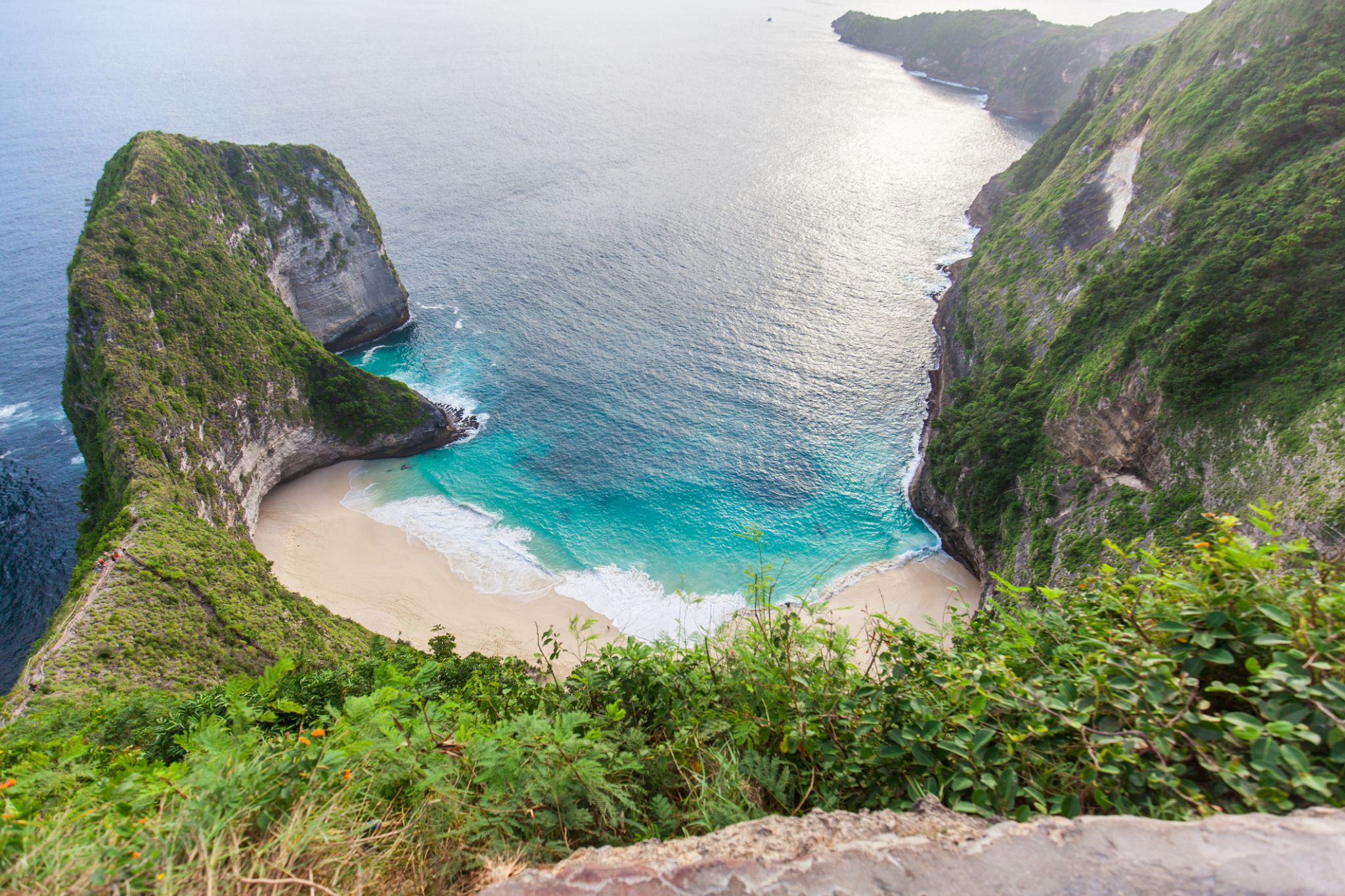 Day 67: 07:00-17:00
Day 67: 07:00-17:00Manta rays / Ecuador
Manta
-
 Day 68:
Day 68:Day at sea / Sea
-
 Day 69: 09:00-18:00
Day 69: 09:00-18:00Puntarenas / Costa Rica
Puntarenas is the capital and largest city in the Province of Puntarenas, on the Pacific coast of Costa Rica.
-
 Day 70: 07:00-16:00
Day 70: 07:00-16:00South Cross / Peru
-
 Day 71: 08:00-16:00
Day 71: 08:00-16:00Akahutla / Salvador
-
 Day 72:
Day 72:Day at sea / Sea
-
 Day 73: 07:00-16:00
Day 73: 07:00-16:00Acapulco / Mexico
-
 Day 74:
Day 74:Day at sea / Sea
-
 Day 75: 07:00-18:00
Day 75: 07:00-18:00Cabo San Lucas / Mexico
Cabo San Lucas or simply Cabo, is a resort city at the southern tip of the Baja California Peninsula, in the Mexican state of Baja California Sur. As of 2015, the population of the city was 81,111 inhabitants. Cabo San Lucas together with San José del Cabo is known as Los Cabos. Together they form a metropolitan area of 305,983 inhabitants.
Cabo has been rated as one of Mexico's top 5 tourist destinations; it is known for its beaches, scuba diving locations, balnearios, the sea arch El Arco de Cabo San Lucas, and marine life. The Los Cabos Corridor has become a heavily trafficked vacation destination for tourists, with numerous resorts and timeshares along the coast between Cabo San Lucas and San José del Cabo.
Cabo houses a range of wildlife, including rays, sharks, birds, and a range of fish, such as mahi-mahi (dorado), and striped marlin.
-
 Day 76:
Day 76:Day at sea / Sea
-
 Day 77: 10:00-18:00
Day 77: 10:00-18:00Ensenada
-
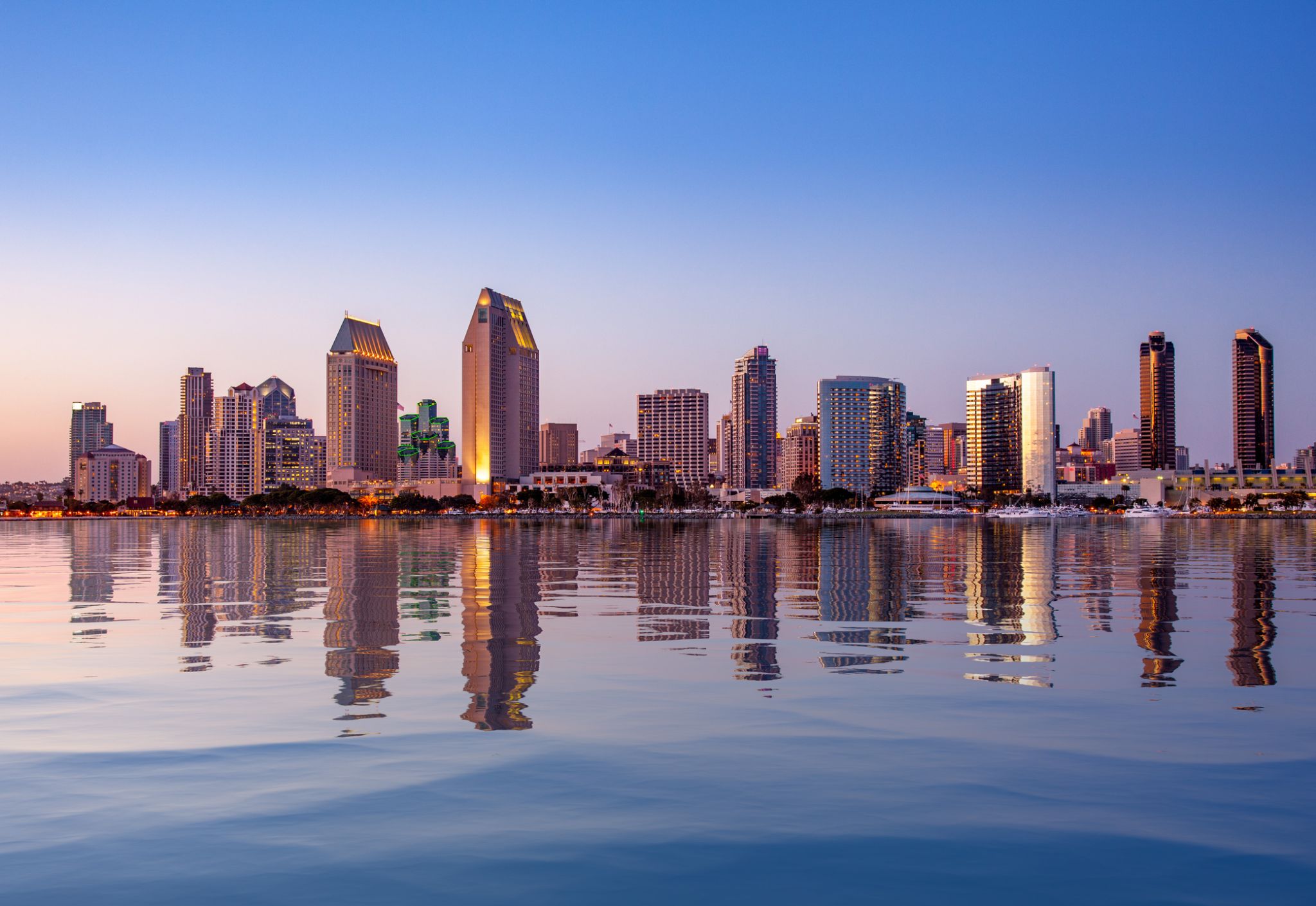 Day 78: 06:00-18:00
Day 78: 06:00-18:00San Diego California / USA

